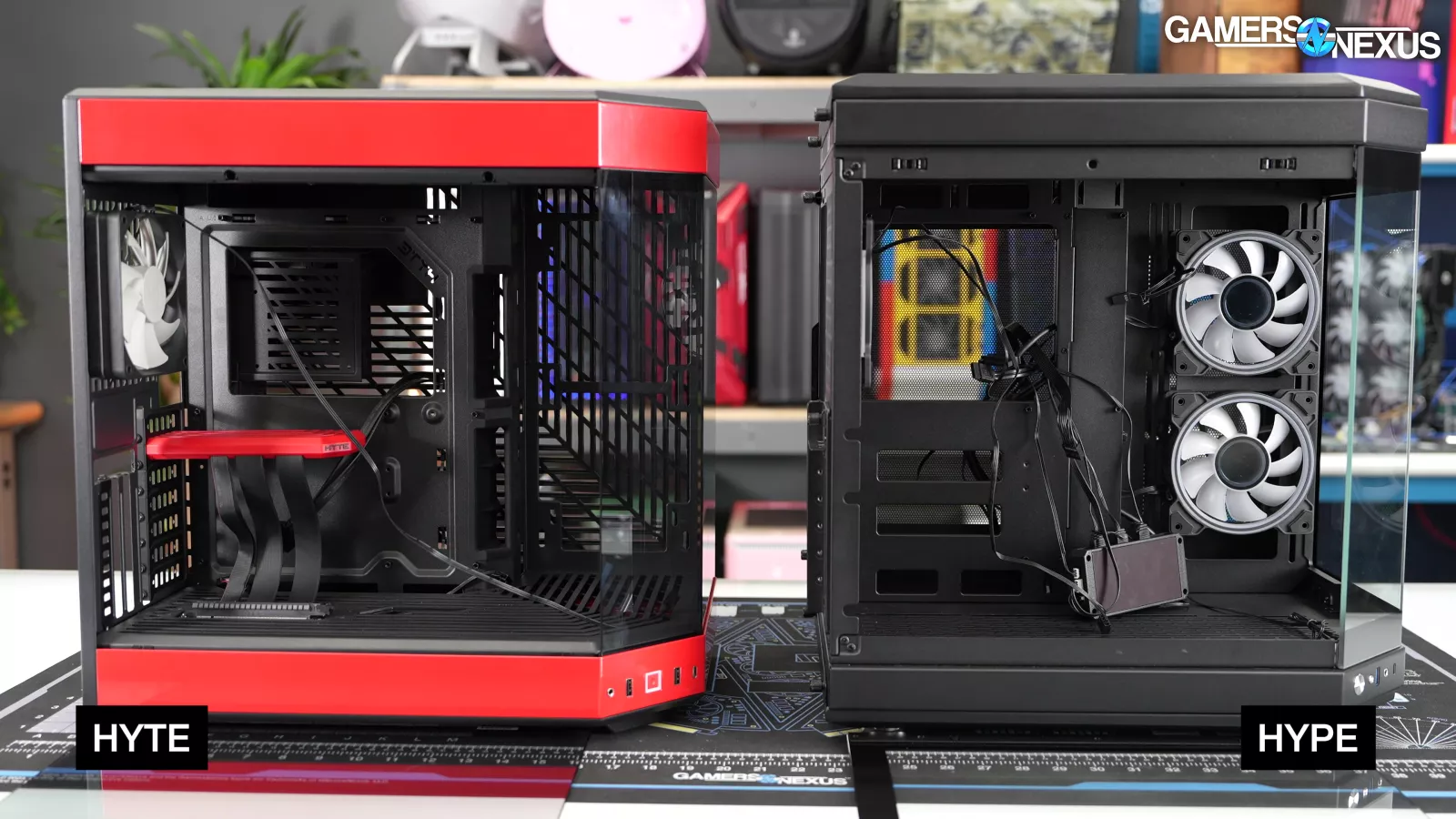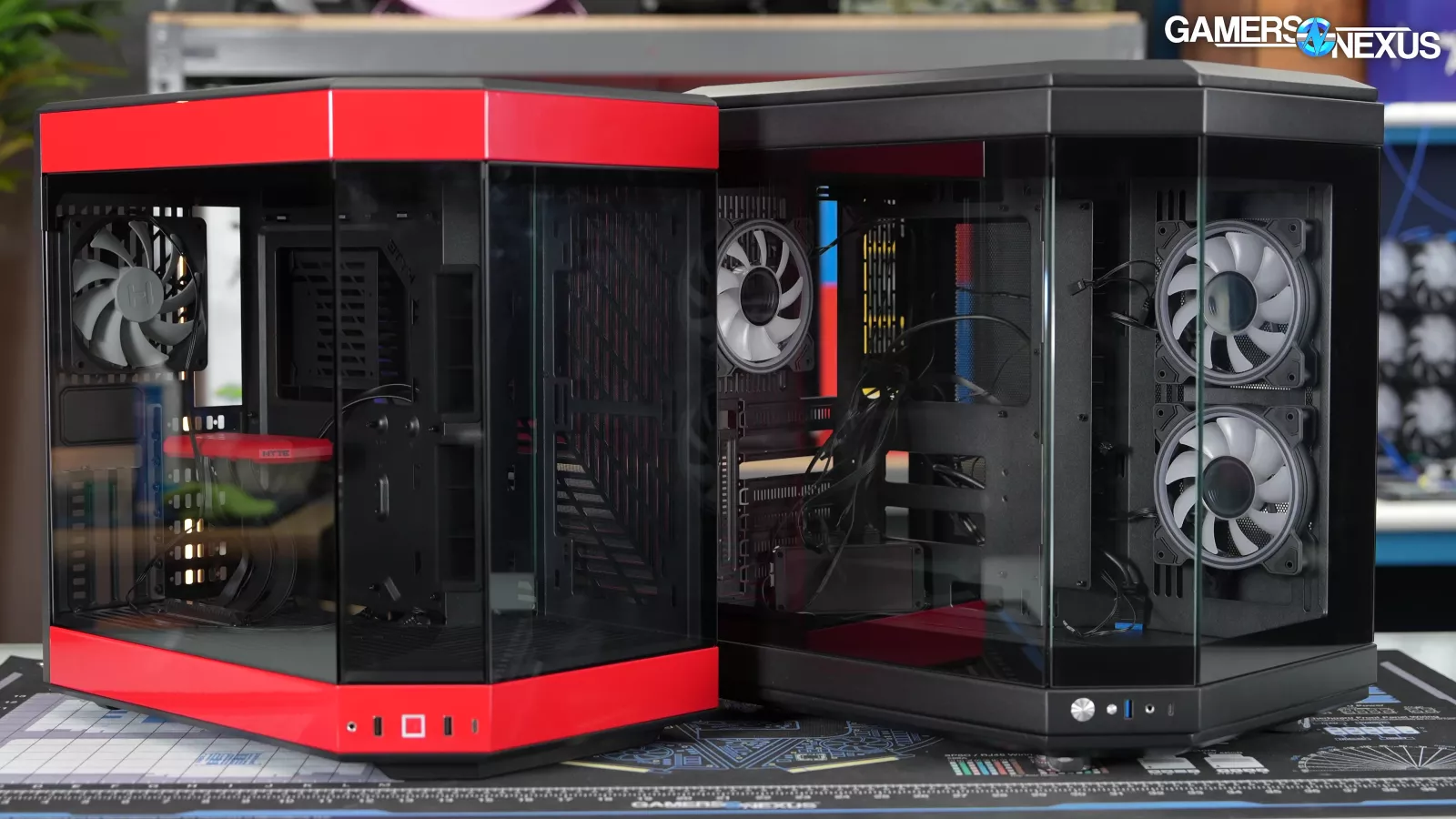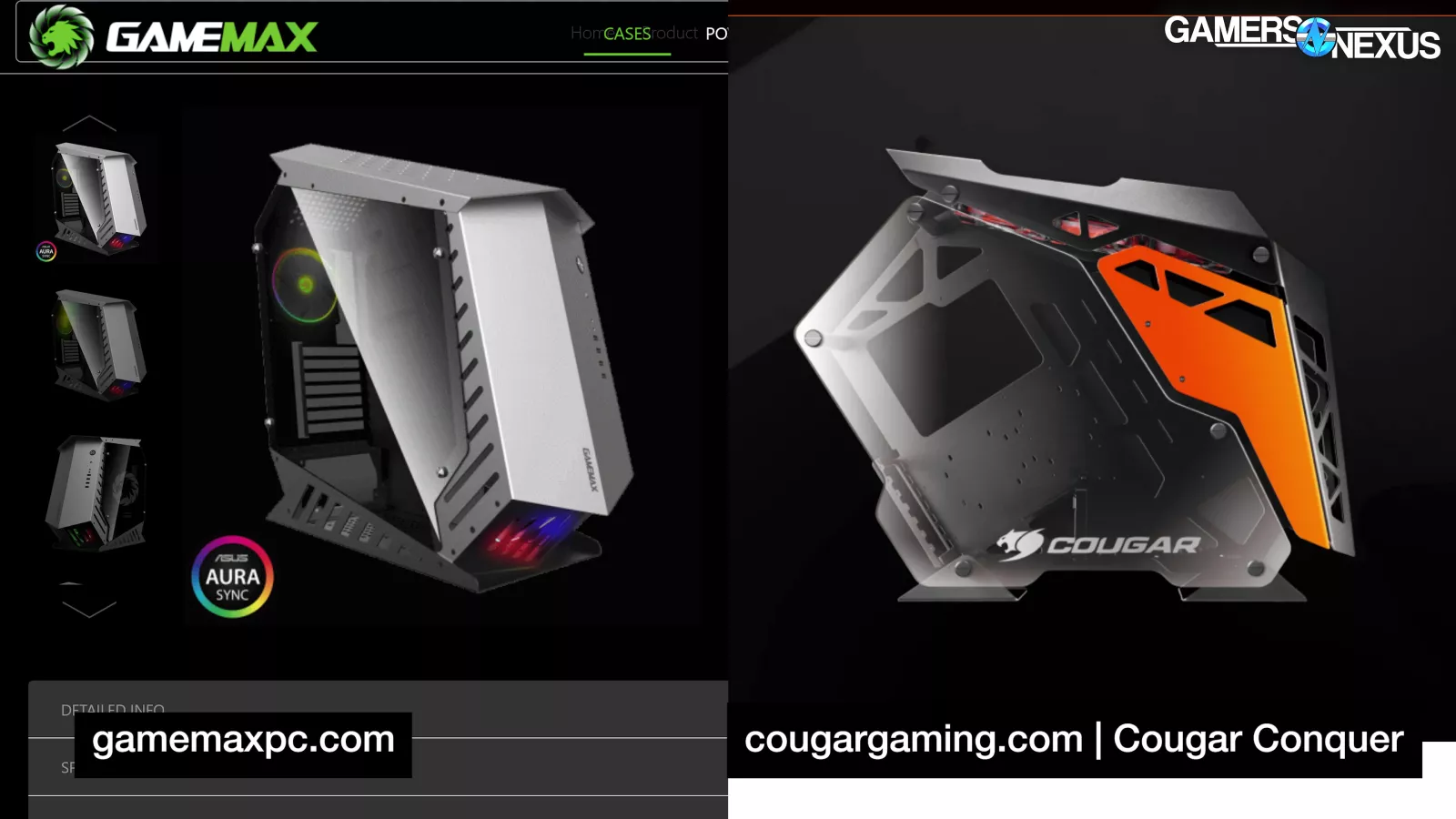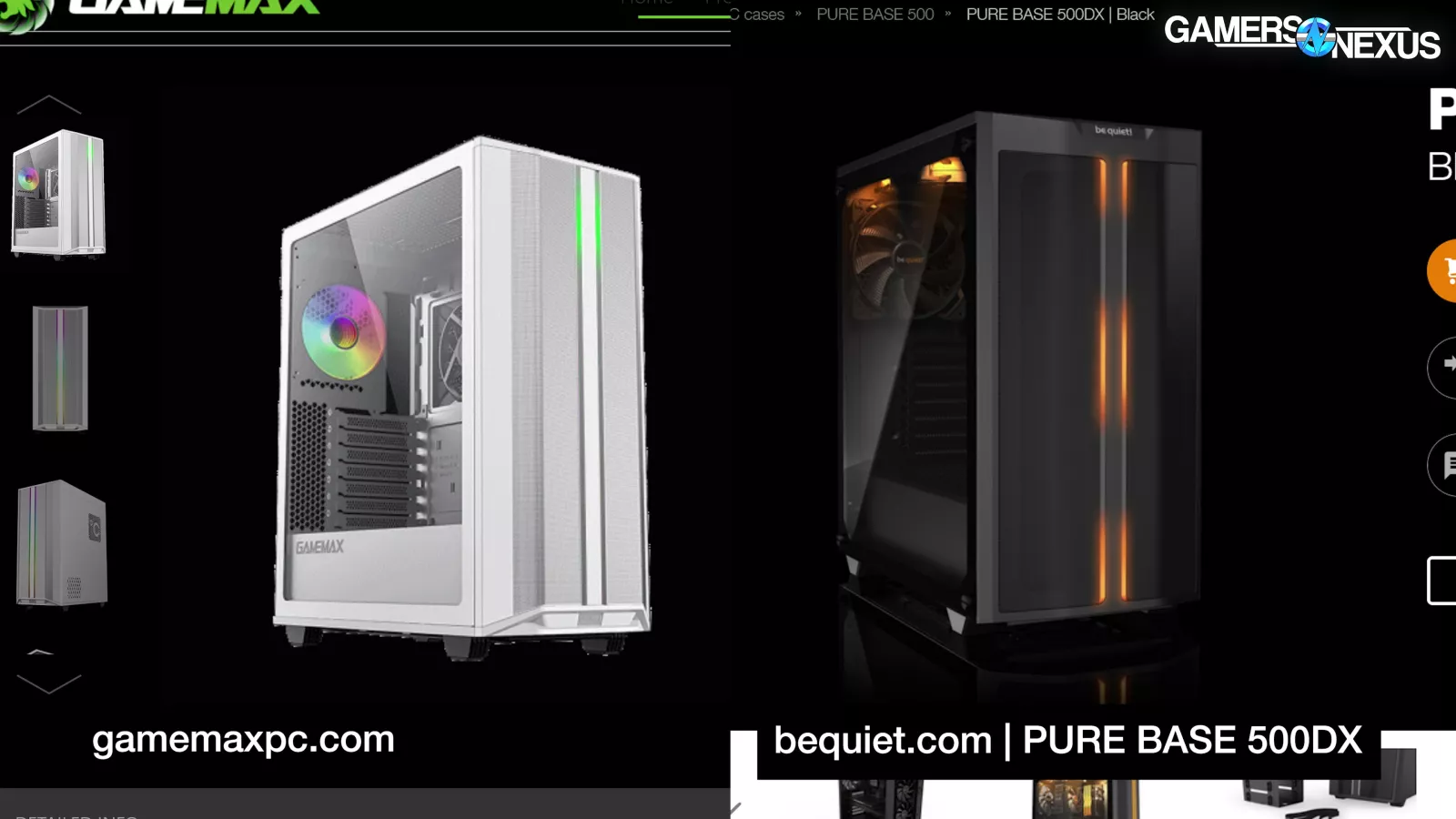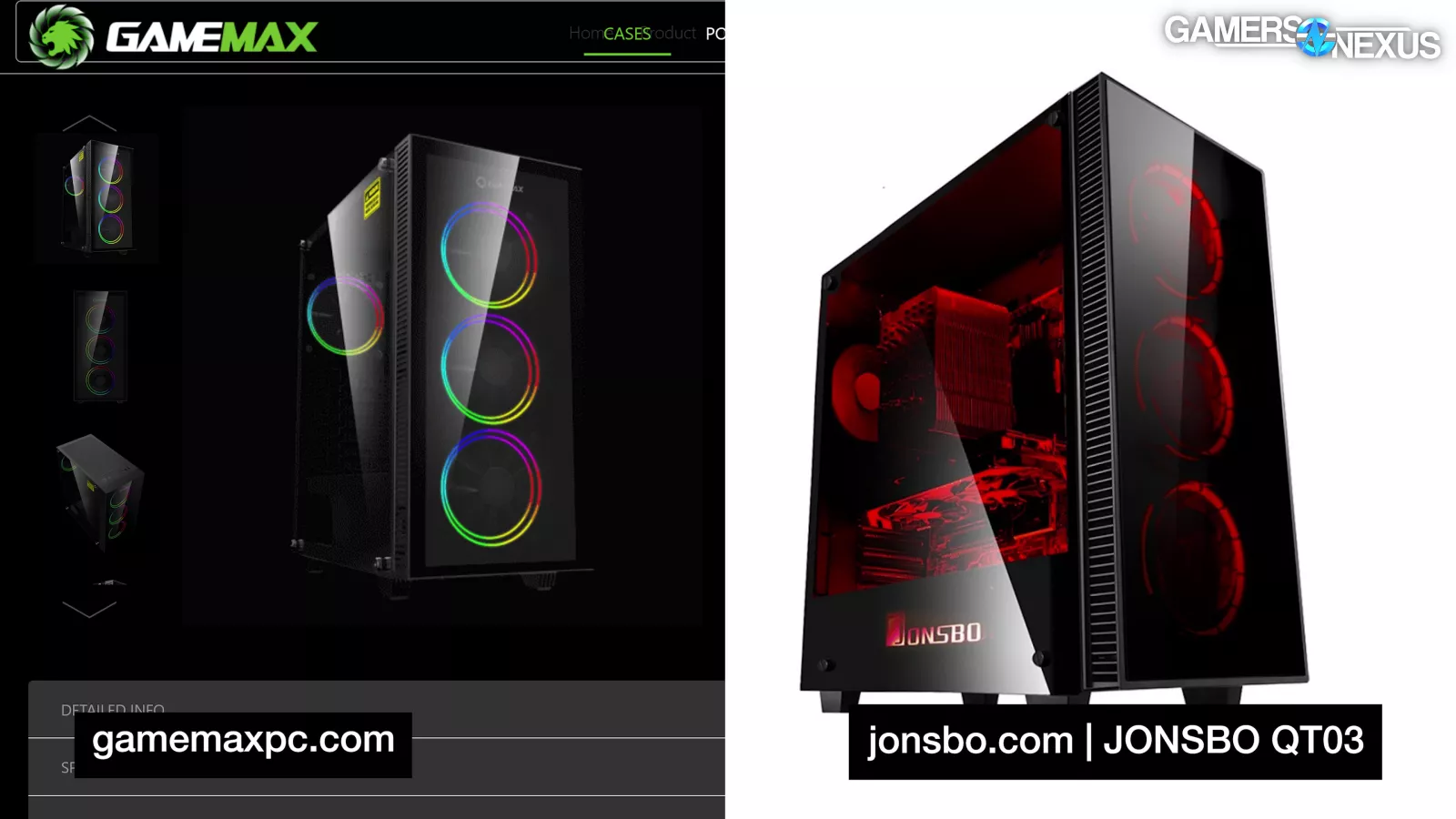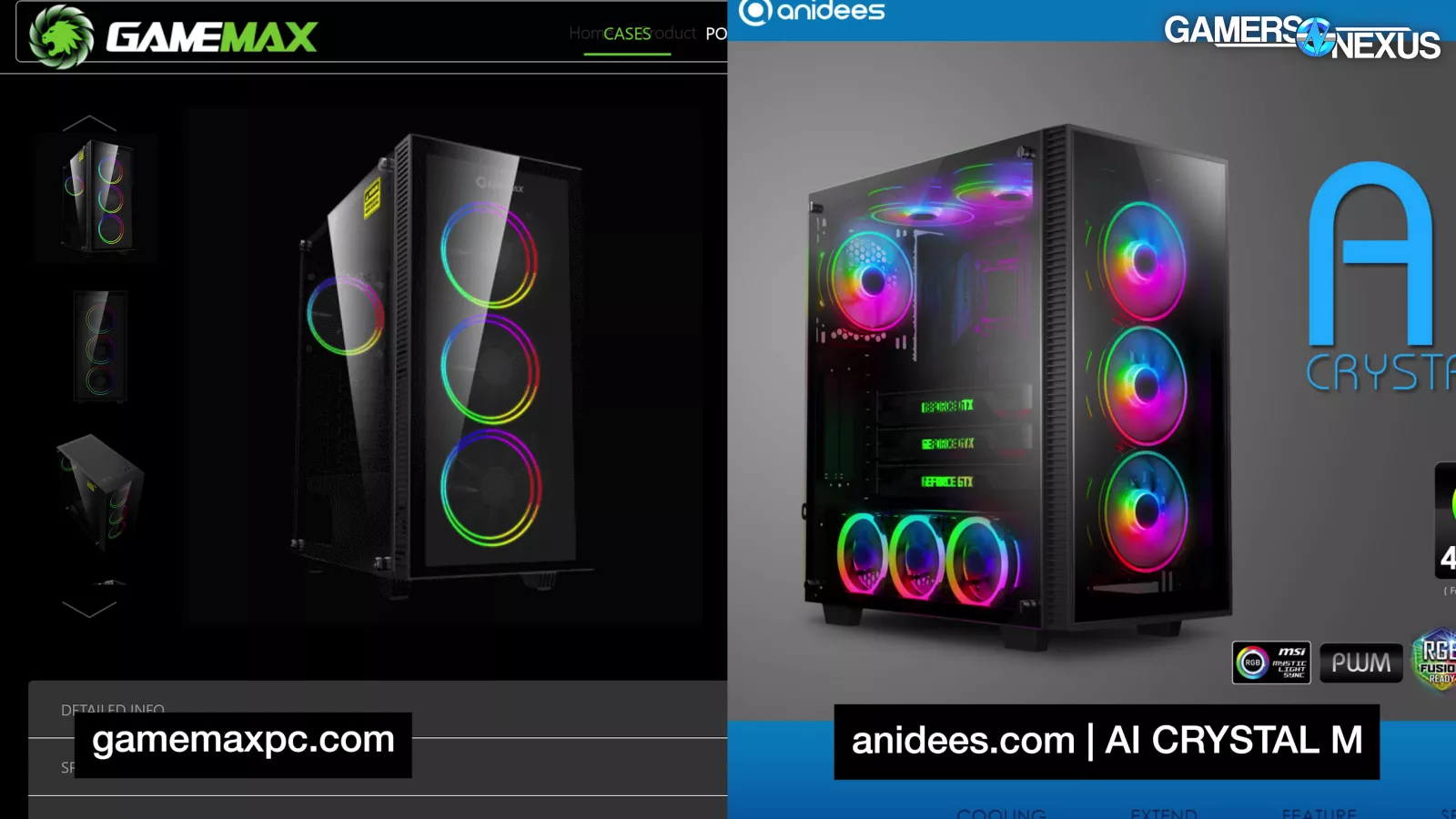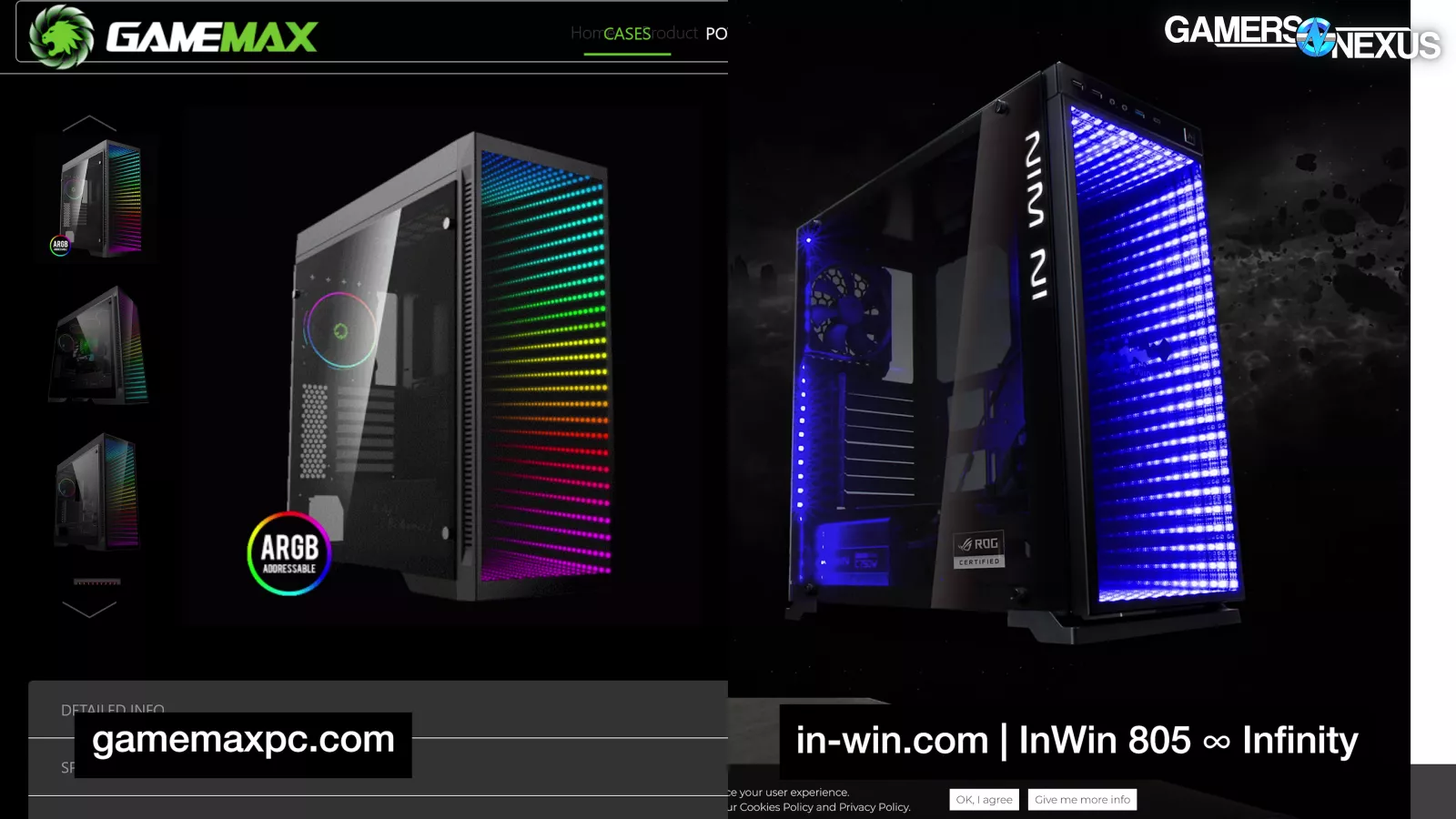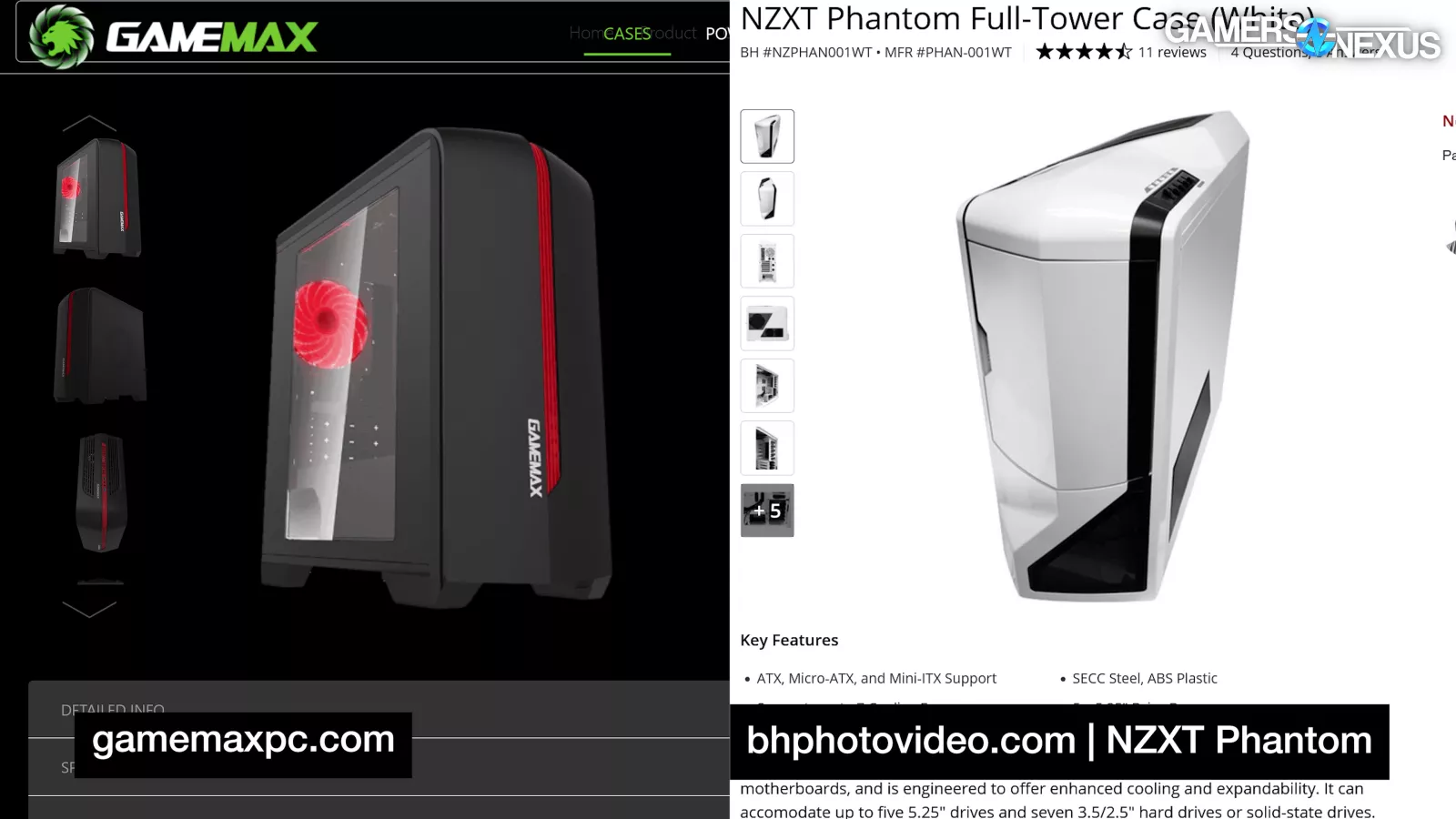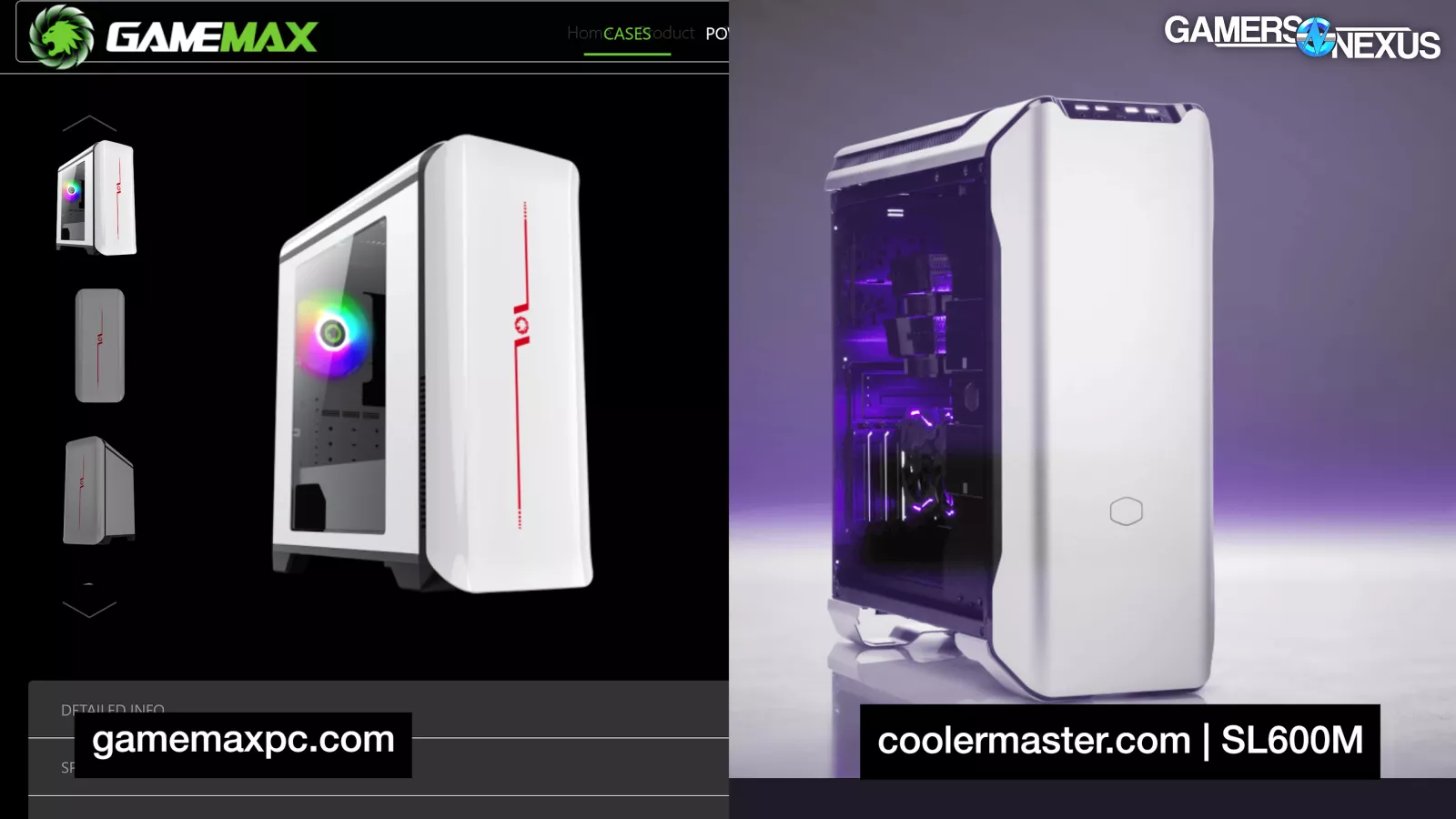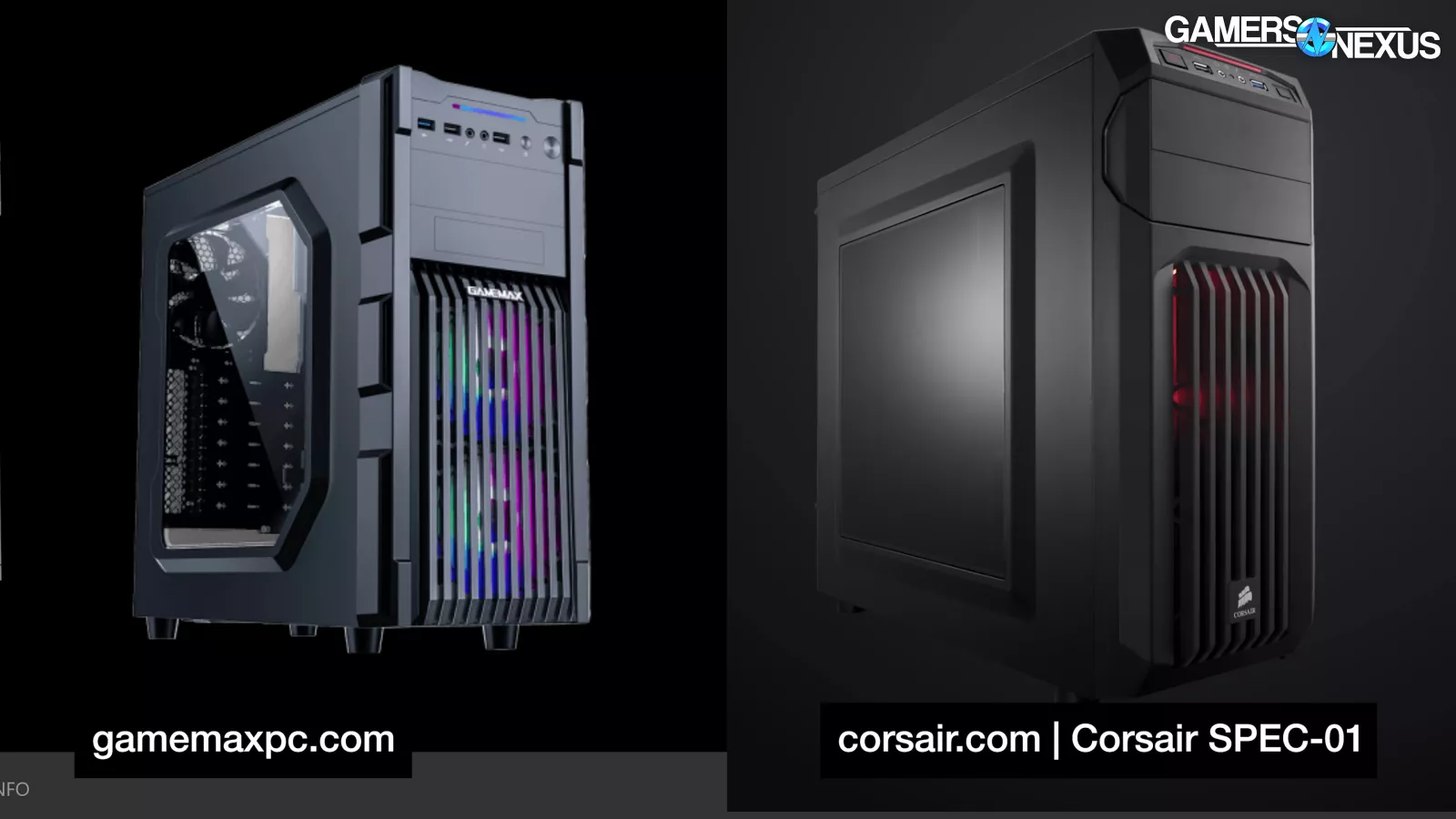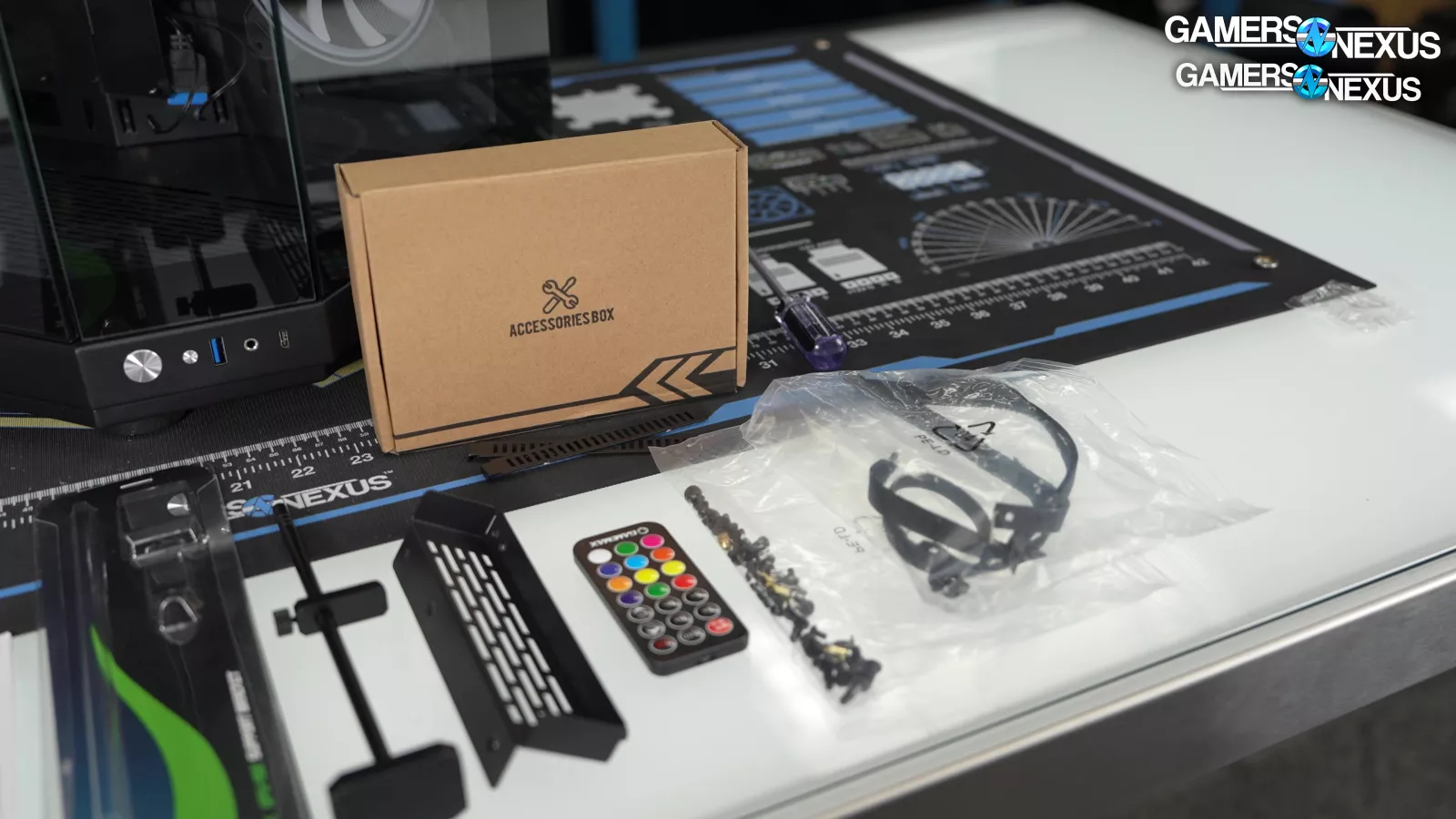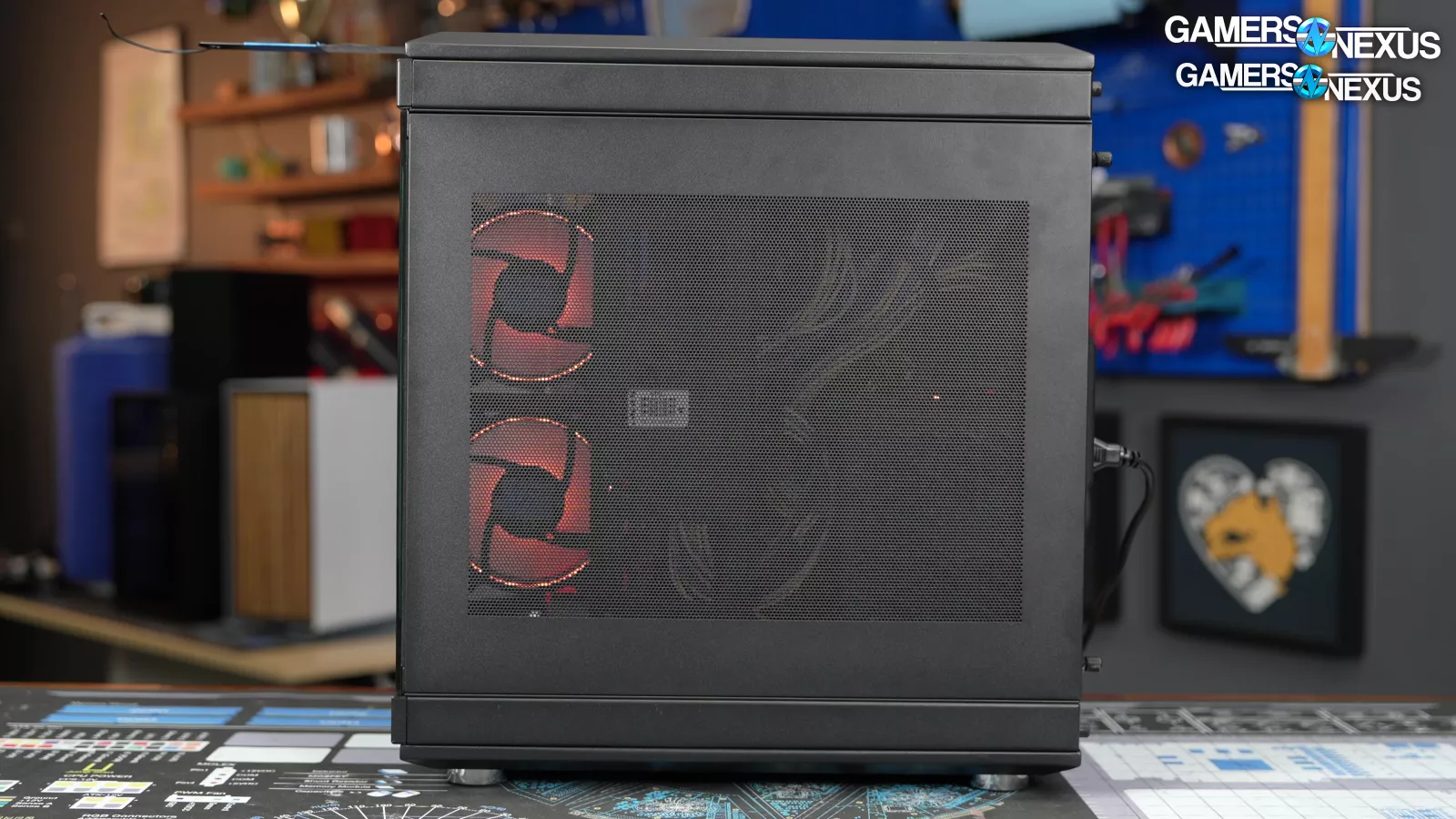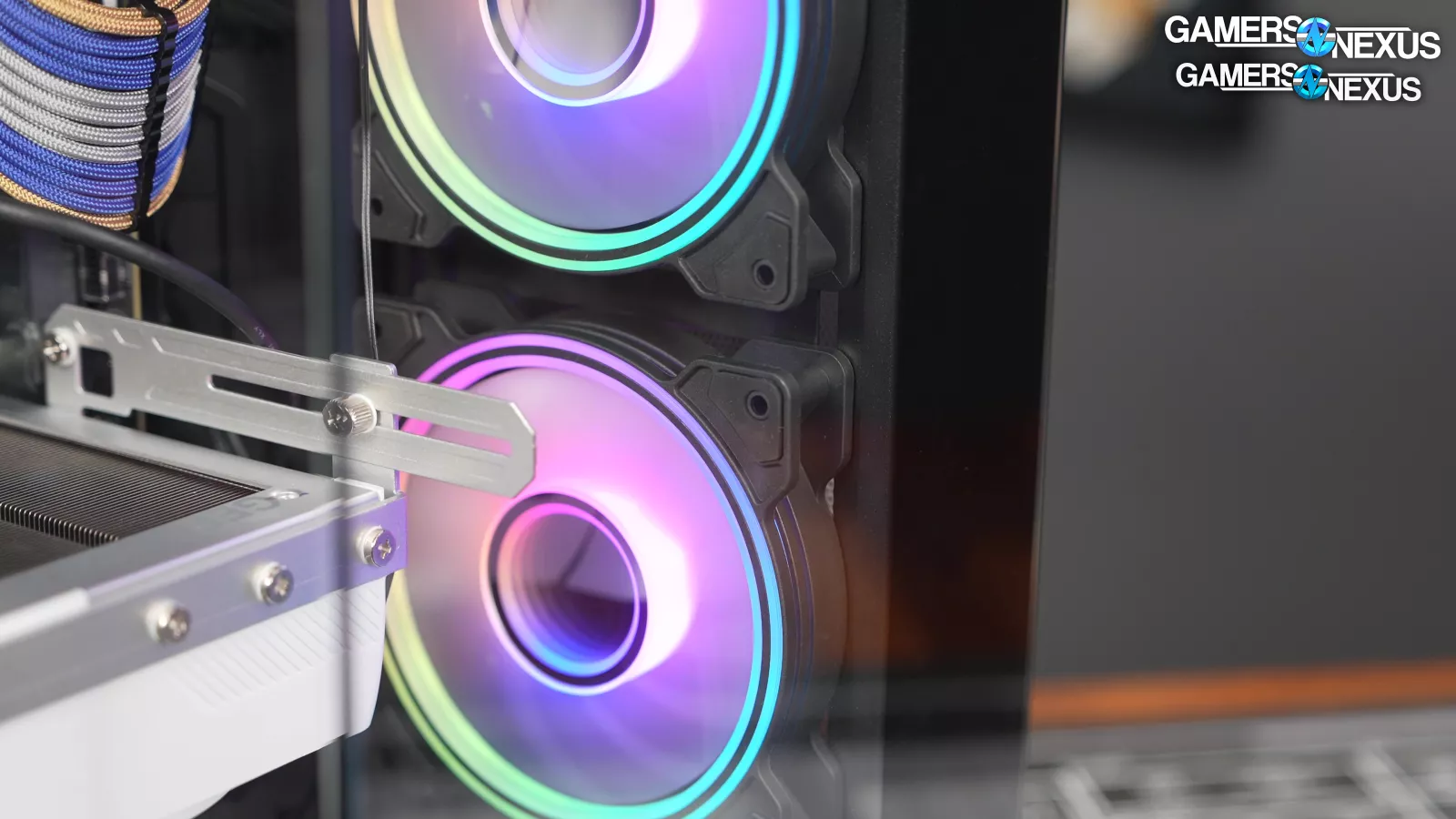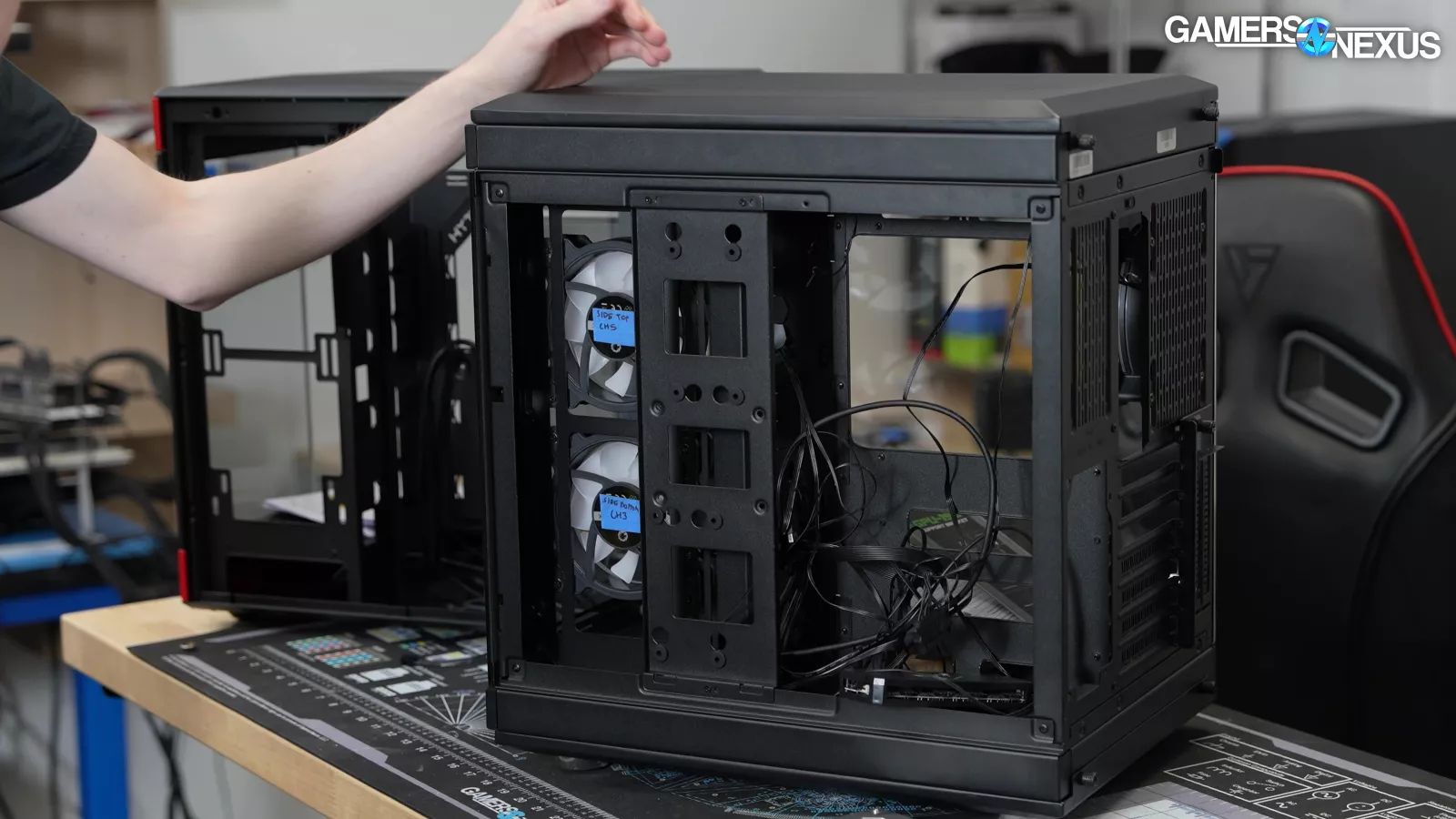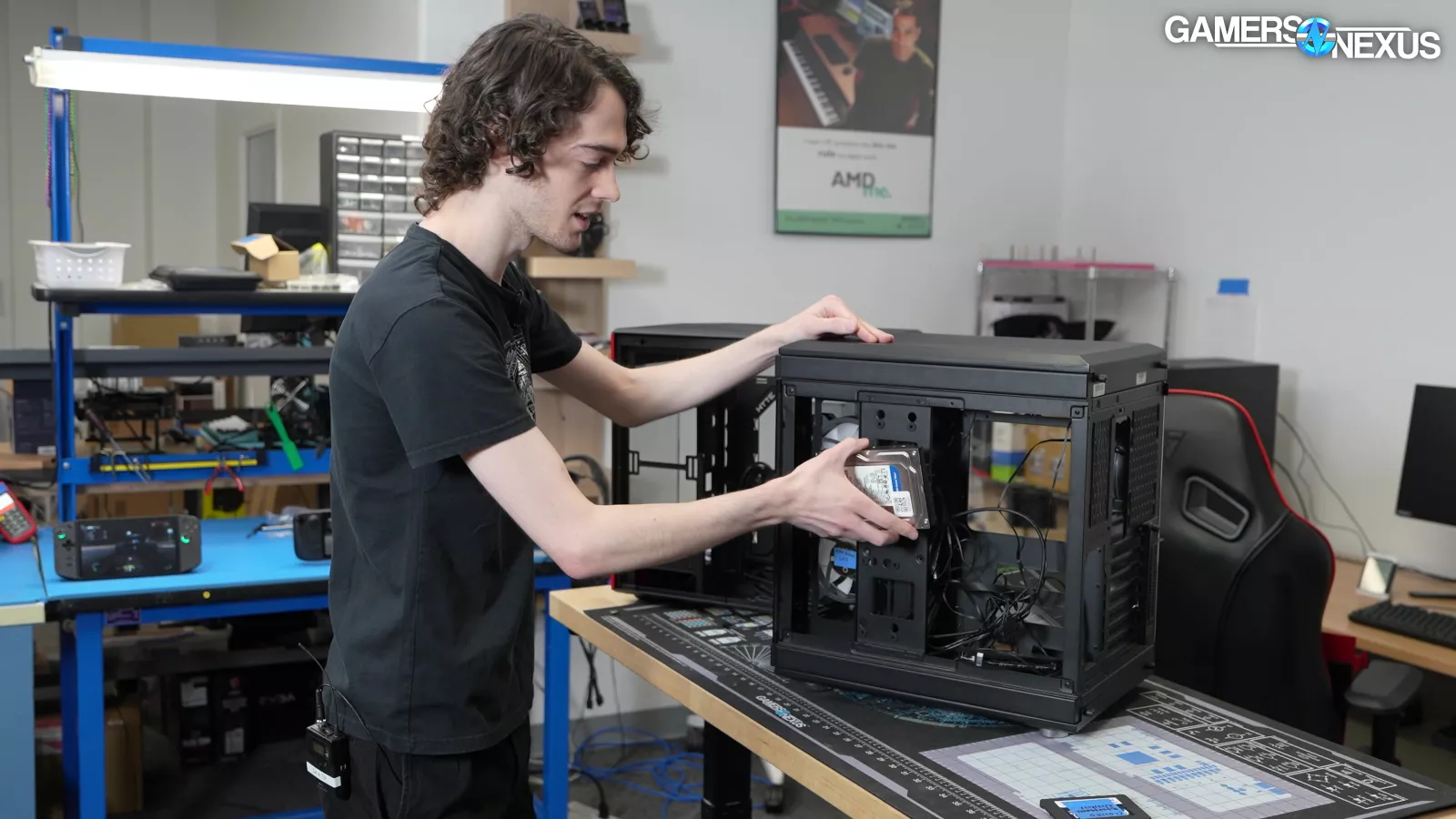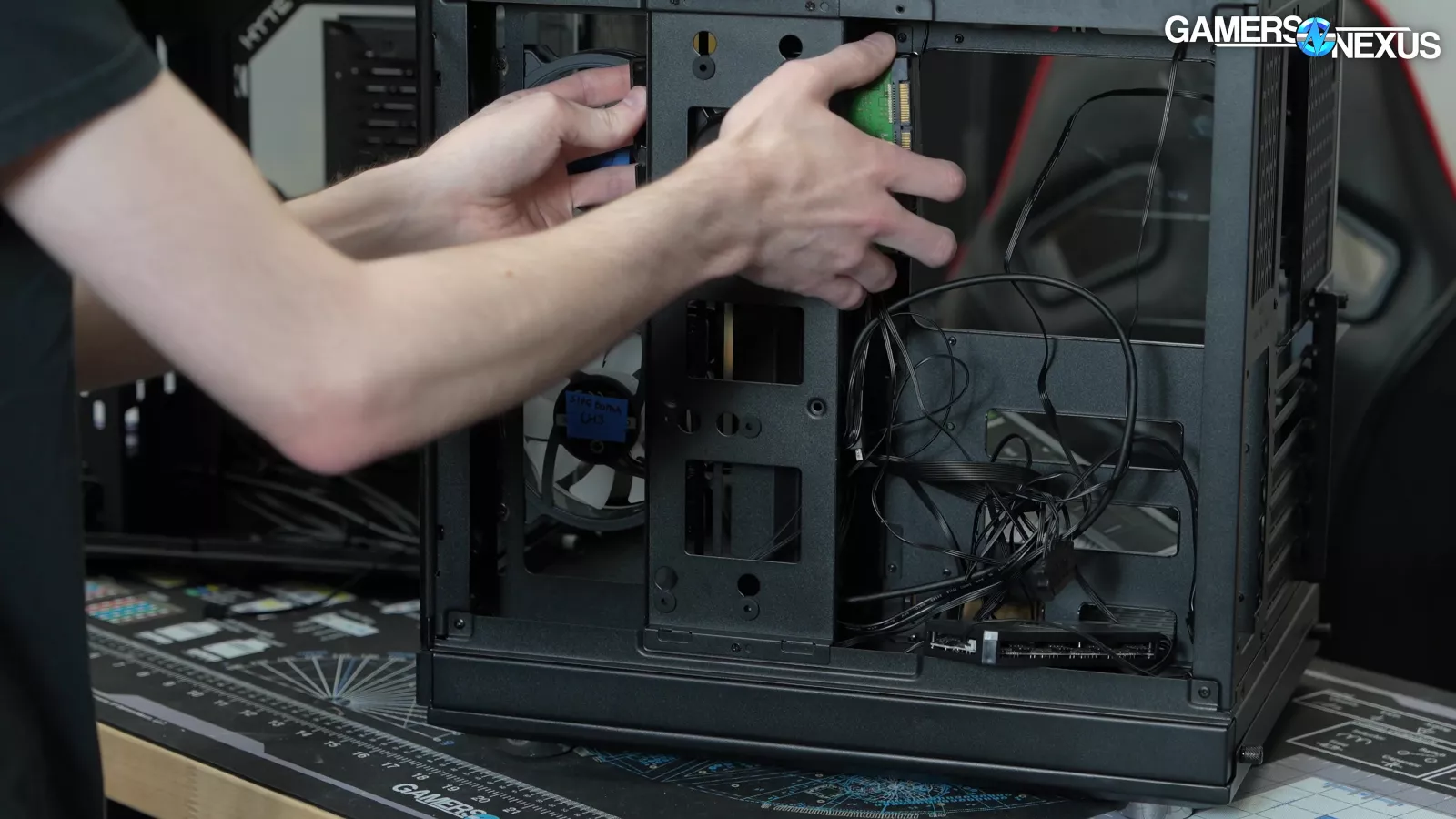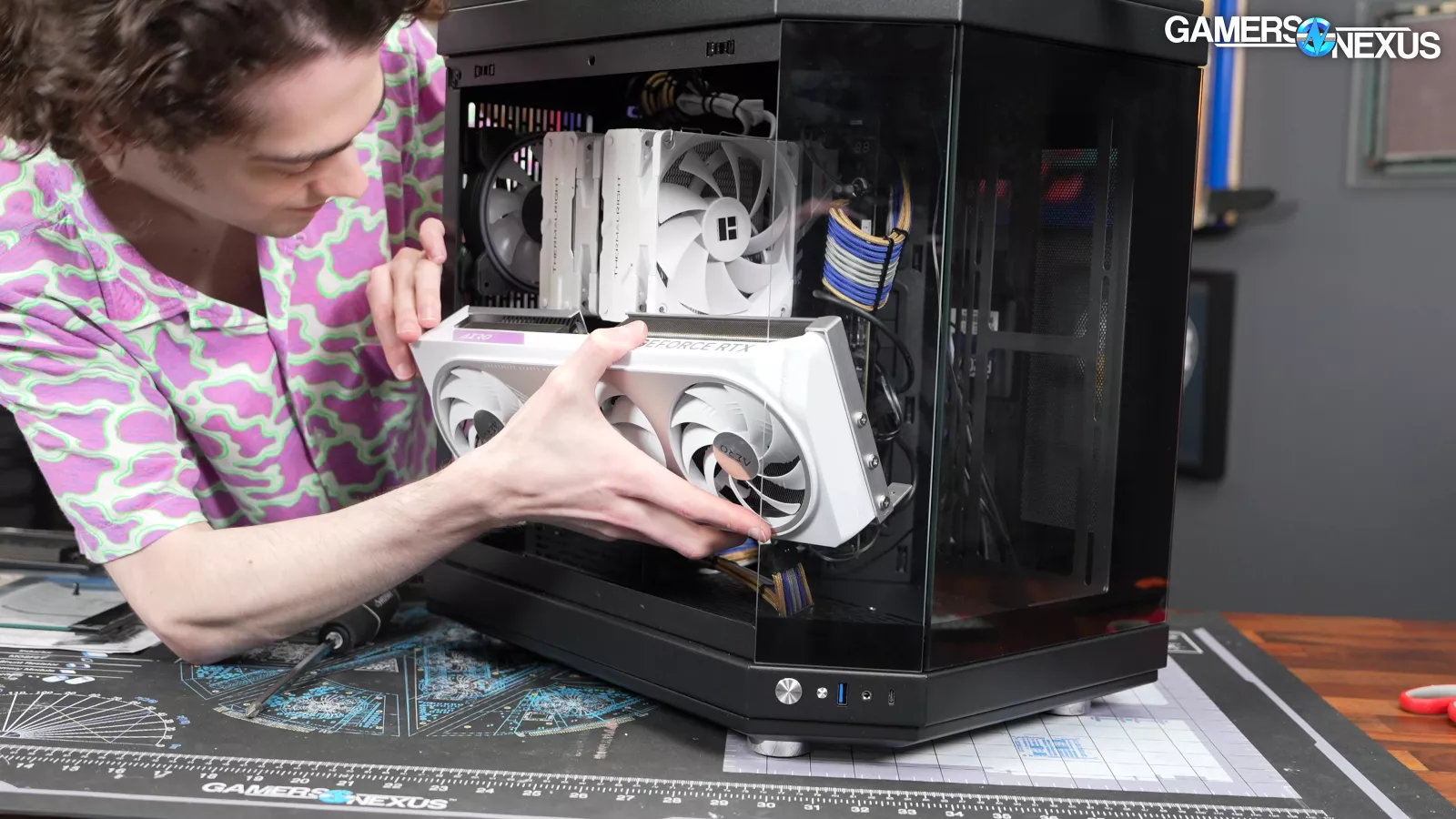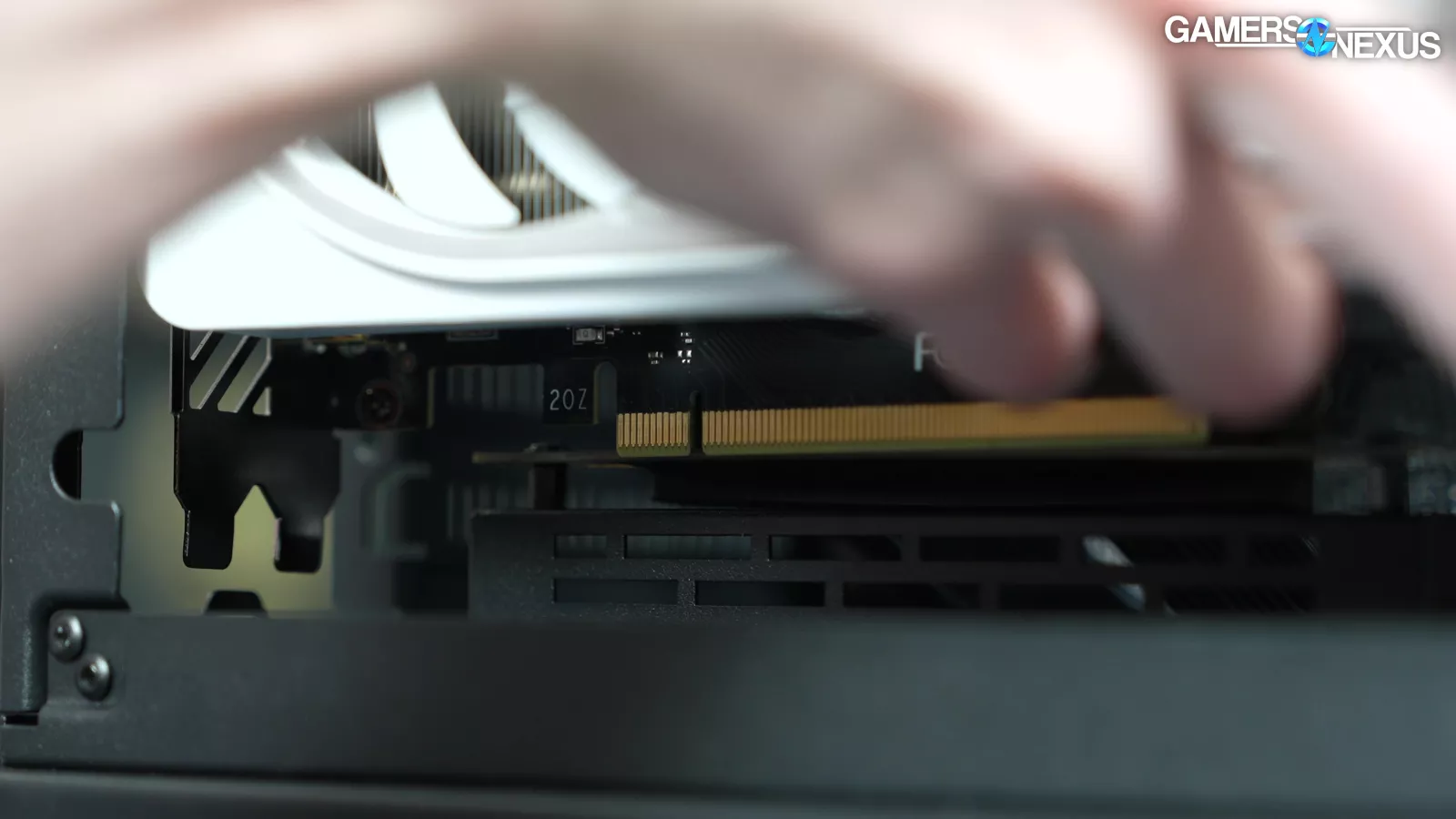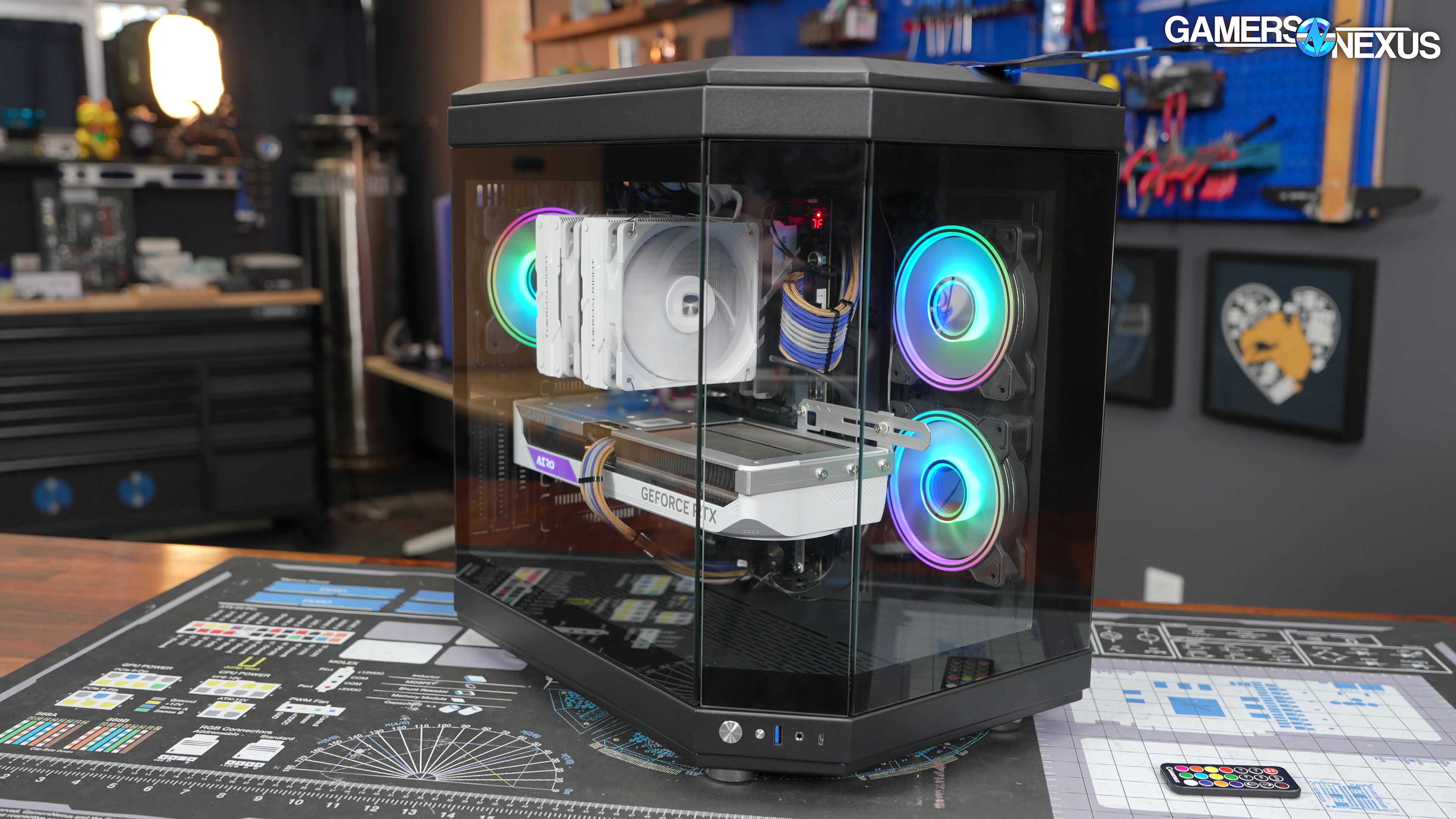
We put GameMAX’s Hype case through thermal tests and examine its build quality (or lack thereof)
The Highlights
- GameMAX’s Hype case is a clone of Hyte’s Y60
- The Hype case features poor thermals and build quality
- The Hype is steals so much that it makes us reluctant to review future cases from GameMAX
- Original MSRP: $110 - $150
- Release Date: September 2023
Table of Contents
- AutoTOC
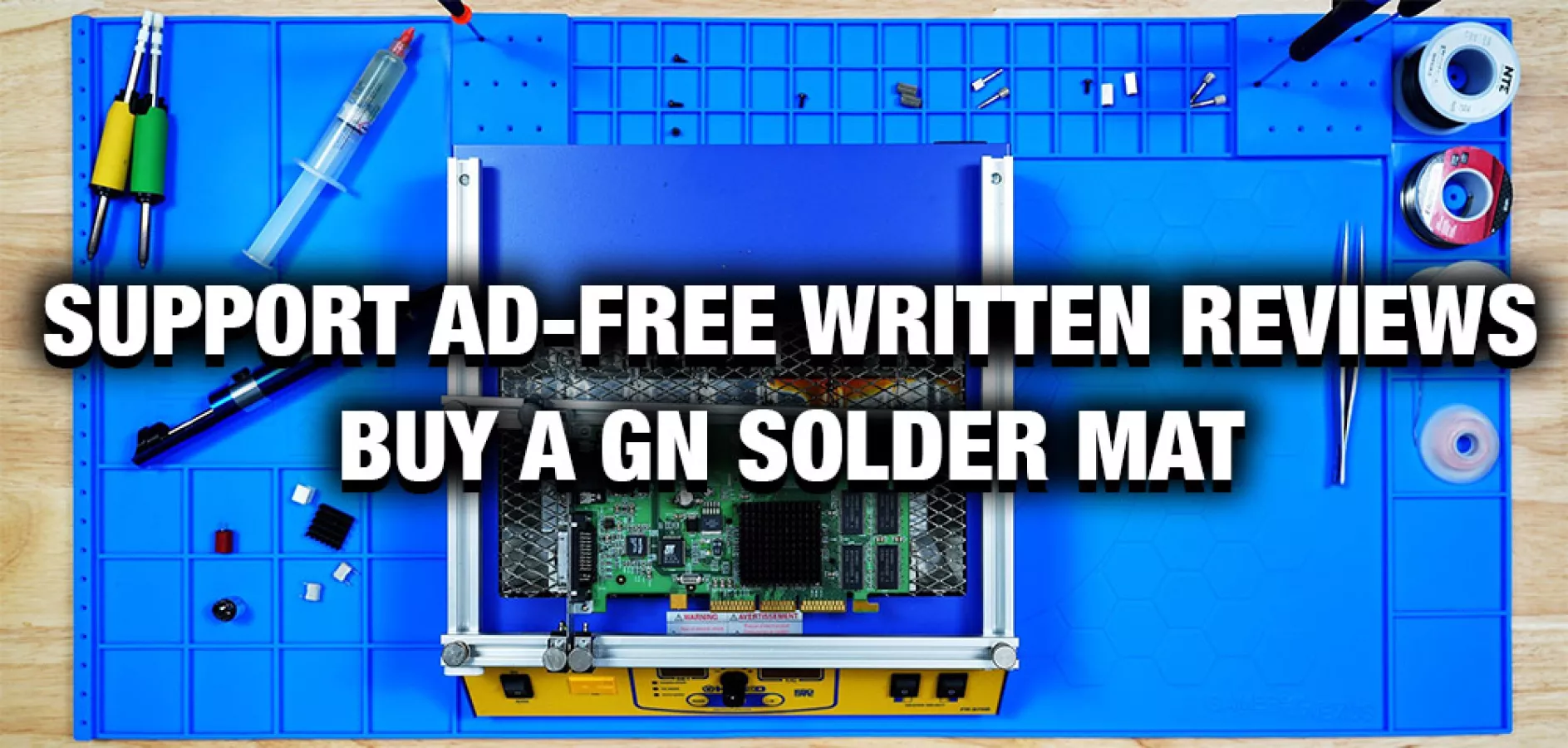
Intro
GameMAX likes stealing things, as is evident with its HYPE case. Its box calls it a “modern aesthetic case” which is a description stolen from HYTE. On its website, even its description text is literally copy-pasted from Hyte.com, which reads, “Chamfered molding on the top and bottom of the chassis ground the case visually and allows for glass-free displays; Our antechamber design hides unattractive cables, keeping your PC clutter-free, visually appealing, and running cool.”
Its website is also inconsistent with its self description writing, “With over 15 years of experience creating PC cases” and then later writing, “With over 10 years experience creating PC cases.”
Editor's note: This was originally published on March 30, 2024 as a video. This content has been adapted to written format for this article and is unchanged from the original publication.
Credits
Test Lead, Host, Writing
Steve Burke
Writing, Testing
Patrick Lathan
Camera, Video Editing
Vitalii Makhnovets
Writing, Web Editing
Jimmy Thang
The company also has a slogan that sounds very Asus-inspired that reads, “Created for the ones who dare to win!” It also uses awkward/grammatically incorrect slogans like “Be Gamer !,” “Be ready, be GAMMER,” and “GameMAX is no where to change the world for good.” Finally, on a different GameMAX case, the company names its chassis the “DIAMOND C.O.C.”
We've criticized companies for ripping off designs before, but maybe we've been spoiled: the ripoffs we've covered have been distant enough to avoid immediate legal action. GameMAX is here to show us what a REAL ripoff is with the HYPE, a case that looks nearly identical to the HYTE Y60.
It makes the Gamdias NESO P1 look like a respectful homage. And the Gamdias GC7. And the Gamdias GC4. And the Gamdias GC3. And the Gamdias GC2. Actually, maybe we need to take a look at Gamdias next.
The HYPE really has us dumbfounded. But then, everything in GameMAX’s catalog is at least a surface-level ripoff:
There are some be quiet!-style, some Jonsbo or Anidees, plenty of In Win, a touch of NZXT, Cooler Master, Corsair, Cougar, and obviously Lian Li, but none of them cross the line between "similar" and "blatant imitation" like the HYPE does, and some may be legitimate coincidences. GameMAX has made some cool designs with some strange names, but we're reluctant to review them if there's a chance they'll turn out to also be stolen. Actually, we'd be reluctant to review the "Diamond C.O.C." regardless. That stands for “cooling & overclocking,” by the way, and they claim that it’s patented, but with a name like that, why bother?
If you think we're being too hard on the HYPE, take a closer look at the box.
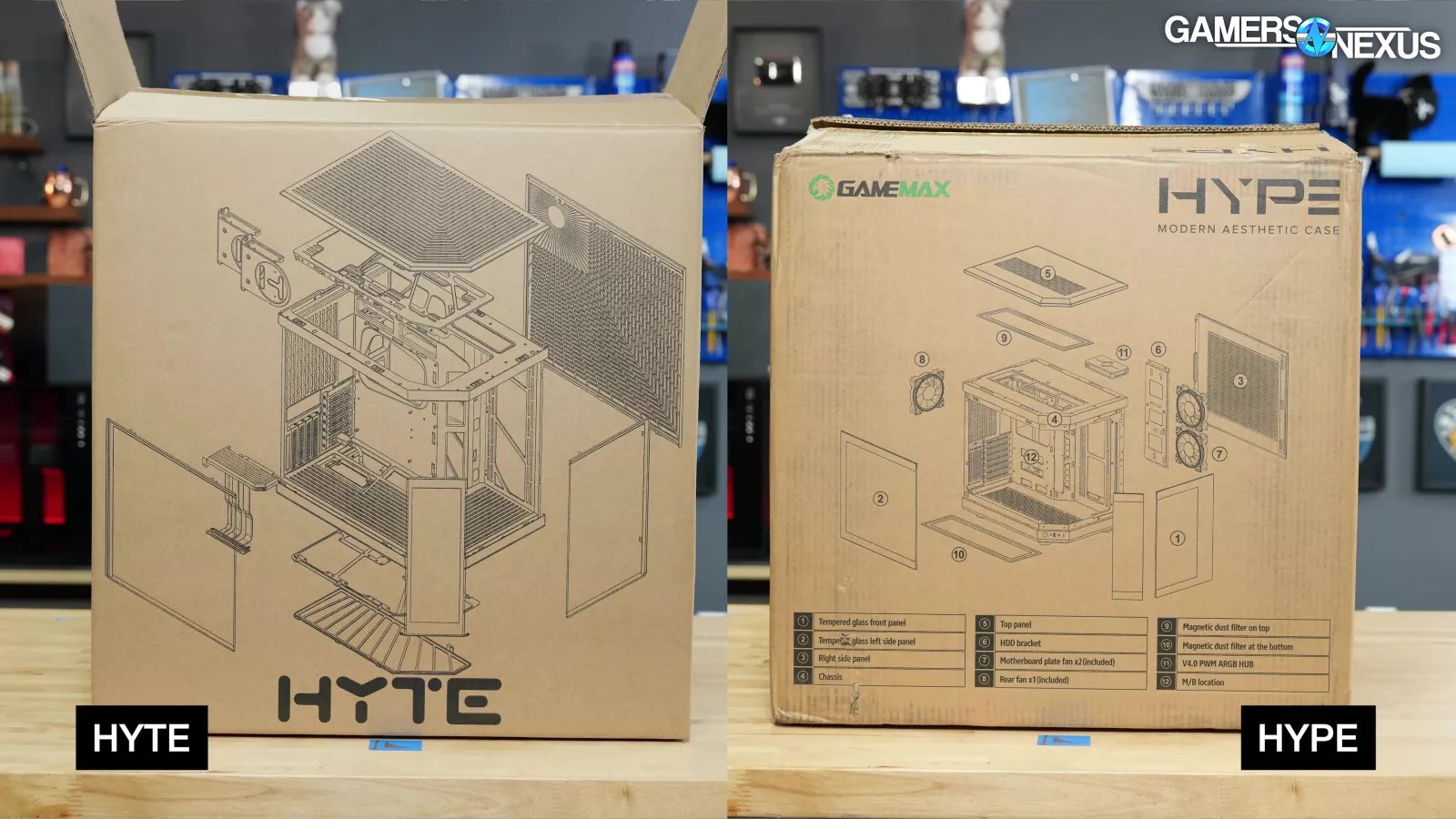
Not only is the HYPE logo a copy of the HYTE company logo, but GameMAX borrowed the exploded case diagram as well. The Internet Archive has the HYPE's page stored back to September 2023, more than a year after the HYTE Y60's March 2022 launch, so there's no mistaking who came first.
GameMAX HYPE (Claimed) Specs
| MODEL | HYPE | SPECIFICATION |
| Form Factor (Midi, Micro, Mini ITX, Full) | ||
| Chassis | 0.8mm SPCC | |
| PSU Form Factor | ATX | |
| M/B Form Factor | ATX/ M-ATX | |
| Front Panel | Tempered Glass | |
| Top Panel | metal cover | |
| Side Panel | Left | Full tempered glass |
| Right | Metal | |
| External Drive Bay(s) | 5.25" (ODD) | NO |
| Internal Drive Bay(s) | 3.5" (HDD) | HDD*2 |
| 2.5" (SSD) | SSD*2 | |
| I/O | Buttons | |
| USB3.0 Port(s) | USB3.0*1 | |
| Type C | Type C*1 | |
| Audio Support | Combo Audio*1 | |
| Card Reader (Support) | Not supported | |
| Fan Controller | 1x V4.0 PWM ARGB HUB,Remote speed adjust | |
| RGB Controller | 1x V4.0 PWM ARGB HUB,Remote and Manual | |
| Controller max. fans | 9 | |
| Remote (IR or RF) | *1 | |
| Cooling Fan Support | Front | NO |
| Top | 120mm*3 | |
| Rear | 120mm*1 (Dual Ring Infinity ) | |
| Left Side | NO | |
| Right Side | 120mm*2 (Dual Ring Infinity ) | |
| PSU Cover | 120mm*3 | |
| Water Cooling Support(Radiator Size) | Right Side | 240mm*1 |
| Top | 360mm*1 | |
| Rear | NO | |
| Dust Cover | Top and bottom with dust filter | |
| Slots | 10 slots,(Vertical graphics card support ,Riser Cable option) | |
| Full Case (inc Fascia) | 442*310*473.6 (L*W*H)mm | |
| Carton | 535*405*525 (L*W*H)mm | |
| Net Weight (Kg) | 11.54kg | |
| Gross Weight (Kg) | 12.87kg | |
| VGA Card Length | MAX 400mm | |
| CPU Cooler Height | 185mm | |
| Cable Management Depth | MAX 86mm (PSU POSITION) |
Specs copied directly from manufacturer materials, please read the review for our own (more comprehensible) measurements and opinions
The Build
The case starts out as a complete mess for getting its own fan spec incorrect on the product page.
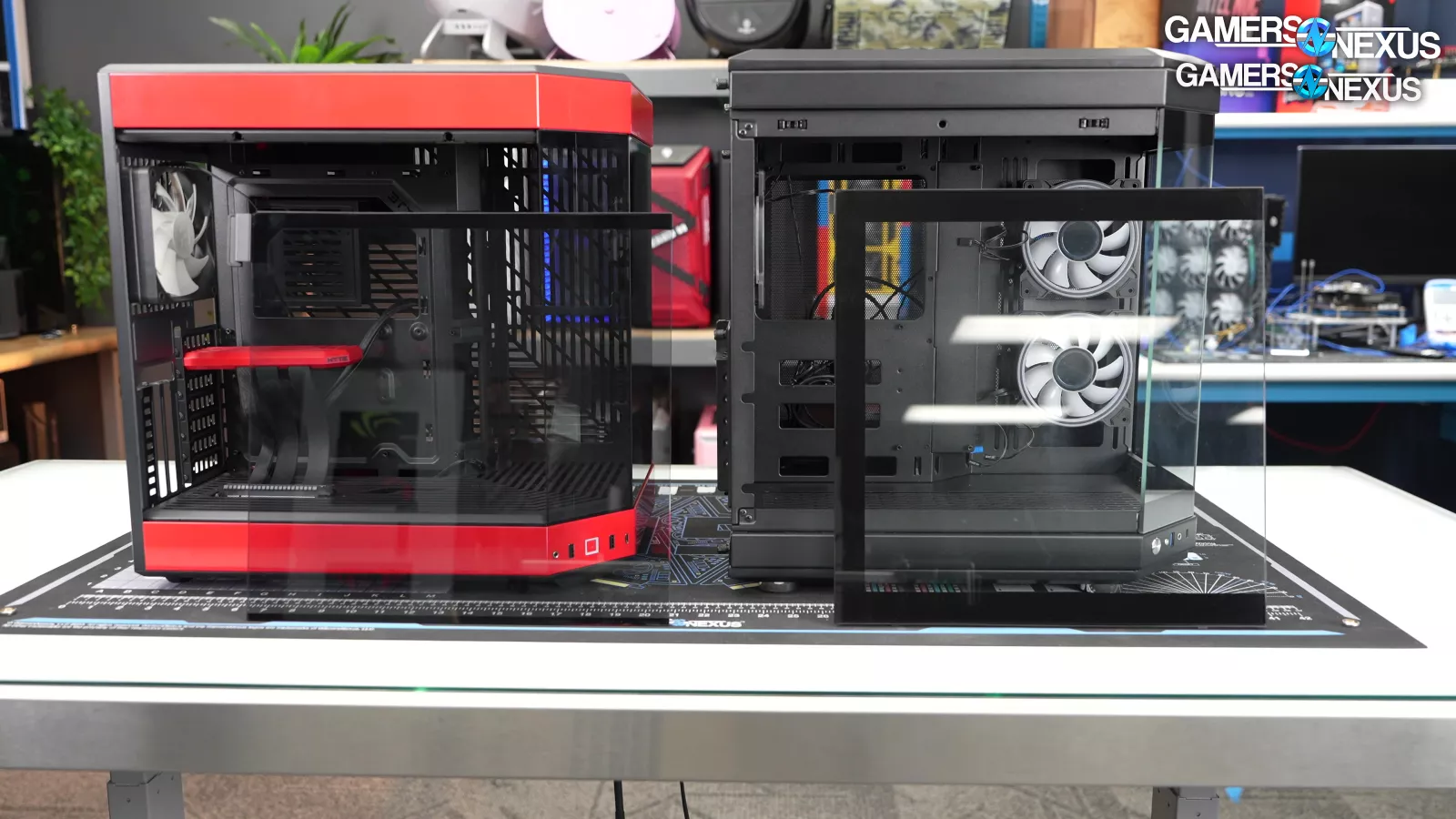
On GameMAX's product page, the HYPE is listed as having "3 x pre-installed 120mm ARGB Fans- 2 beneath the floor, and one at the back of the case," which isn't true. That's the stock fan configuration of a HYTE Y60, not the HYPE, which shipped to us with two side and one rear exhaust.
Yes, all three stock fans are exhaust; this is how all of GameMAX's diagrams depict the fans, so it's not a mistake. We bought our case on Newegg, where the same product description is repeated, although, at the time of publication, it’s listed as "out of stock" with zero user reviews. GameMAX also uses the phrase "Premium Mid-Tower ATX PC Case," which isn't necessarily unique to HYTE, but it is the title of the Y60's product page.
Let's now find some positives. There's a generic GPU support that looks sturdy enough, the metal side panel is technically ventilated, and the infinity mirror fans look nice, although you can find similar fans at very low prices on Aliexpress. Also, there are touches of construction quality, like snaps on the side panels and some captive thumb screws with rubber washers, as well as a decent number of loose velcro ties in the accessory kit. That's pretty much it. The case has some neutral aspects, but nothing else worth calling out for praise.
The build felt like a throwback to ten years ago, but that's partly because we don't often scrape the bottom of the budget barrel, at least other than the DIYPC Zondda-O (watch our review) and weird one-offs like the Coolman Three-Body (watch our review), and Segotep EDI (watch our review). The EDI is maybe the best comparison, because although the HYPE is built cheaply, it is not cheap: it's currently at least $110 if it's available at all, and we bought ours for $150. The $110 models often have high shipping costs.
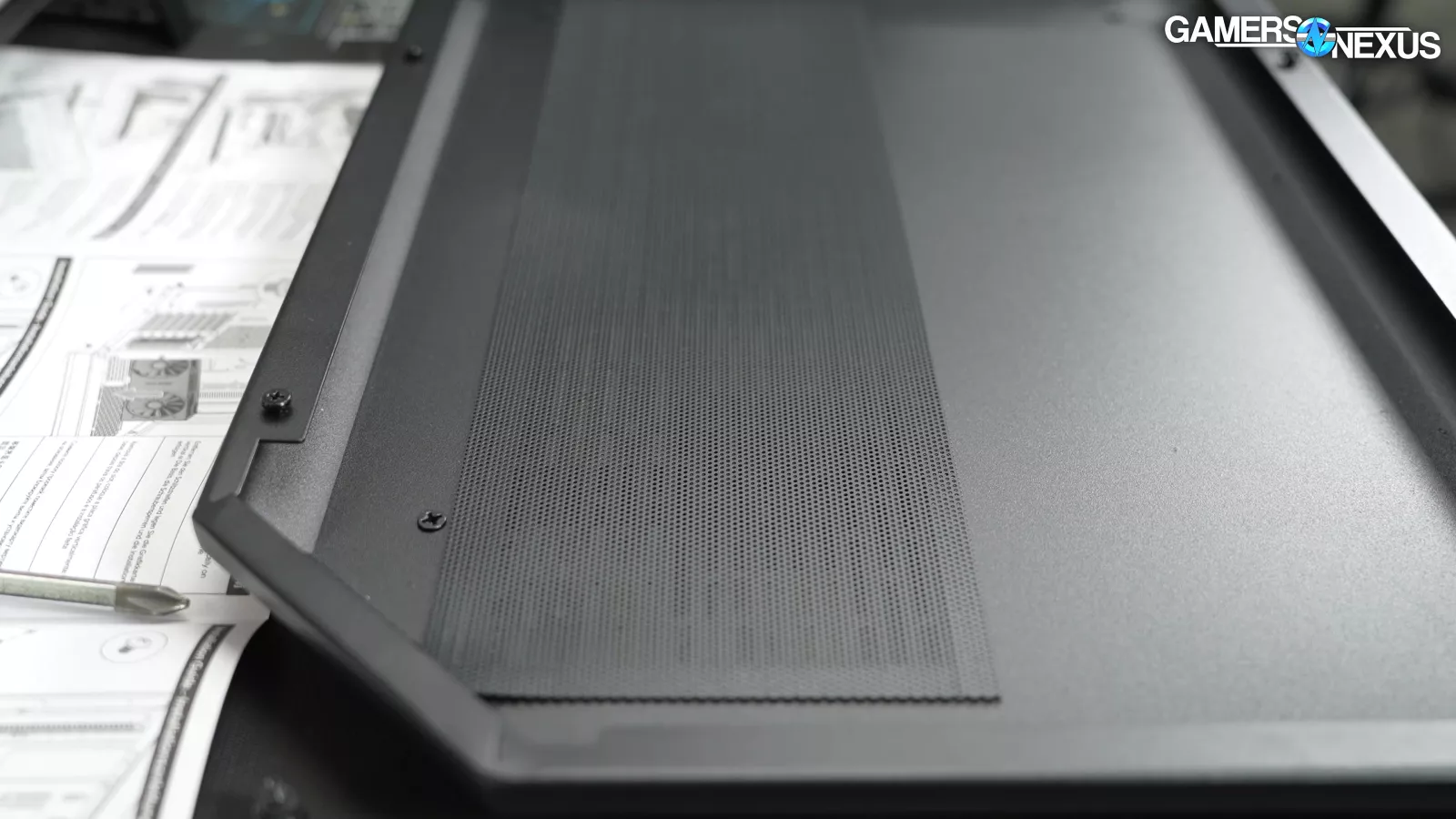
But what we mean by "throwback" is cheap stamped steel, disposable PCIe slot covers, and magnetic dust filters slapped on as an afterthought. This is a new case, though, and it must have required brand-new tooling, which seems like it would be more expensive and difficult than designing an original product. The top panel on our unit was visibly caved in, the screws holding the cable bar were stripped to varying degrees, and the dust filter at the bottom of the case is impossible to fit correctly onto the vent.
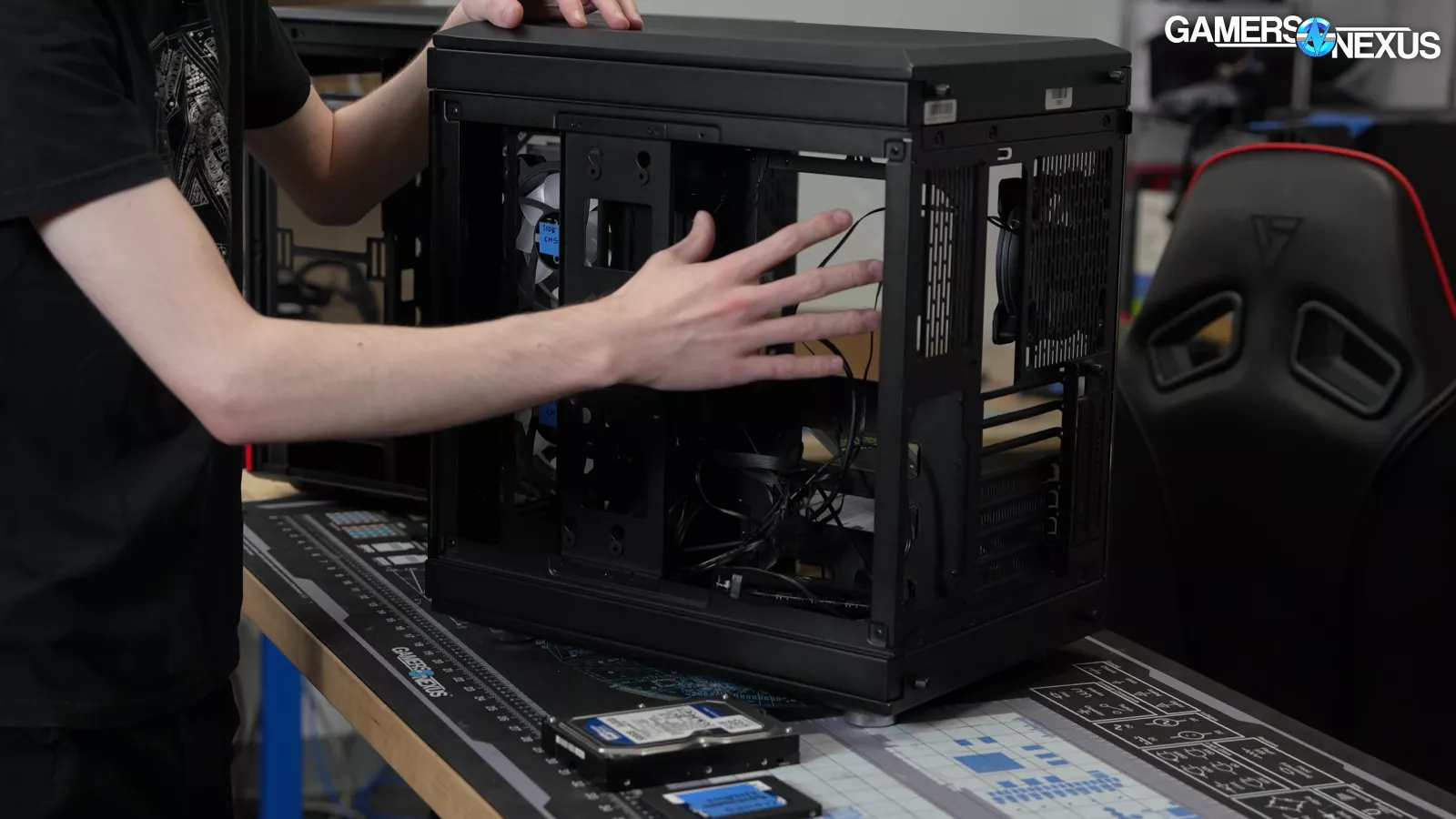
Some aspects of the Hype seem like they were copied without understanding Hyte's Y60. For example, almost every two-chamber case design has a spot for the PSU and a spot for two 3.5" drives at the rear of the case, and maybe an option to swap their positions. The HYPE just has a huge empty gap above the PSU, with mounting holes to slap a single 2.5" drive directly onto the rear of the case.
The only other drive mounts, one 2.5" and two 3.5", are on the O11D-style cable bar. Mounting drives to the bar sucks: there's not enough room, especially for full-size HDDs, and it makes cables untidy. Crucially, the O11D family of cases has alternative mounting options, while the HYPE doesn't.
The Y60 was built from the ground up with vertical GPU mounting in mind, and although the result isn't great thermally, we can appreciate the visual effect.
Meanwhile, the GameMAX HYPE has a vertical GPU support, but no riser cable. The support is screwed into the bottom fan mount, so it conflicts with fans, and it's unnecessarily tall, so our test bench GPU couldn't fit in this configuration. Even if it had worked, the performance would have sucked: the vertical mount is as close as possible to the glass side panel, restricting GPU airflow and pulling the PCIe riser cable across the bottom case vent to completely block it. Drop-in mounting kits (like the one GameMAX sells) are not compatible with the HYPE because of the bars between the expansion slots.
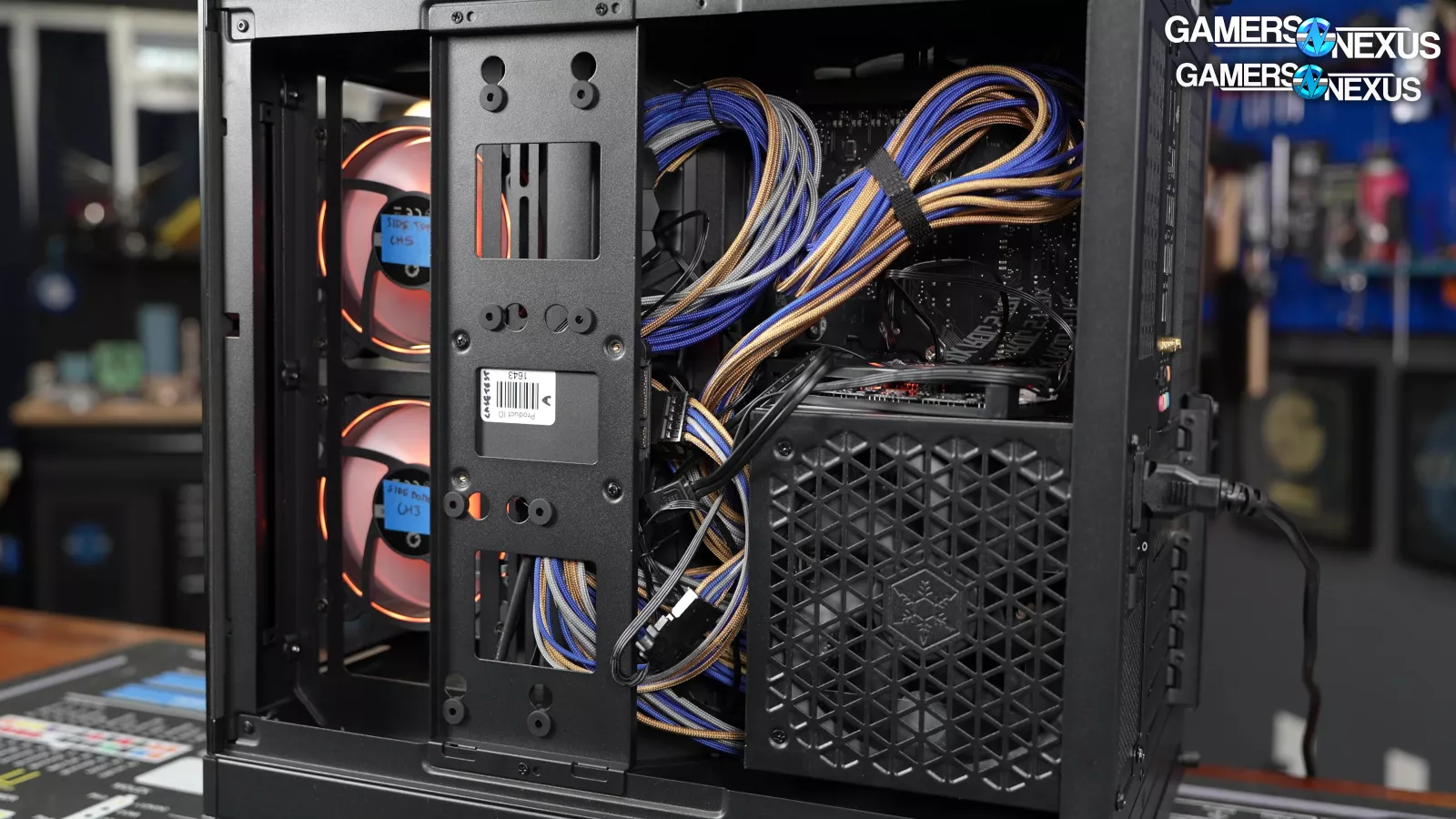
Cable management is bad relative to the size of the case. Normally, there's a direct relationship between how large a case is and how easy it is to work in it. The open spaces with tie points aren't located well, and there's too much metal and not enough access throughout the case, which makes it more difficult than it should be to reach anything.
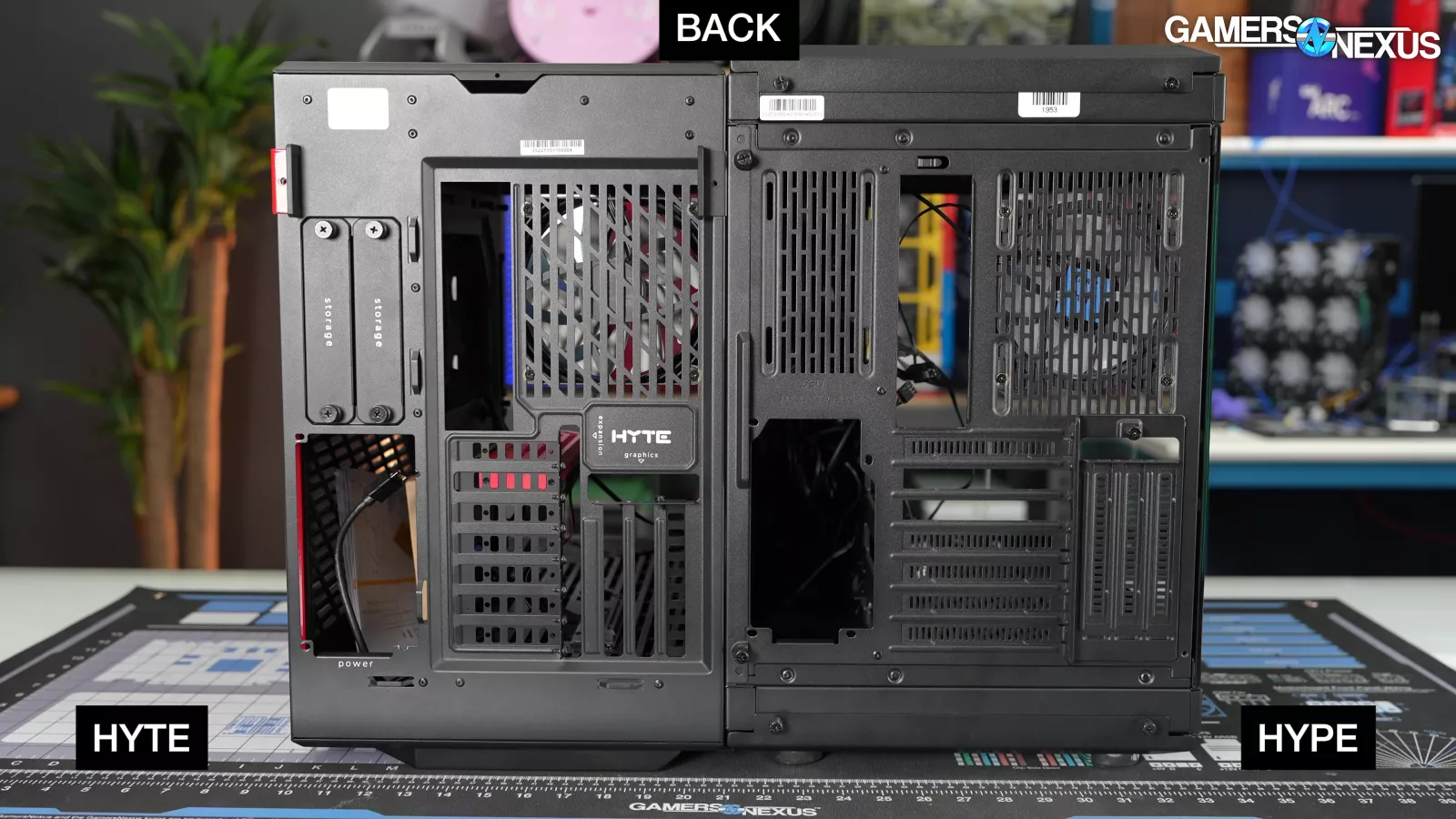
Whereas the Y60 has only low-profile horizontal expansion slots in order to keep its width down, the HYPE has full-size horizontal slots, making it even wider than the Y60.
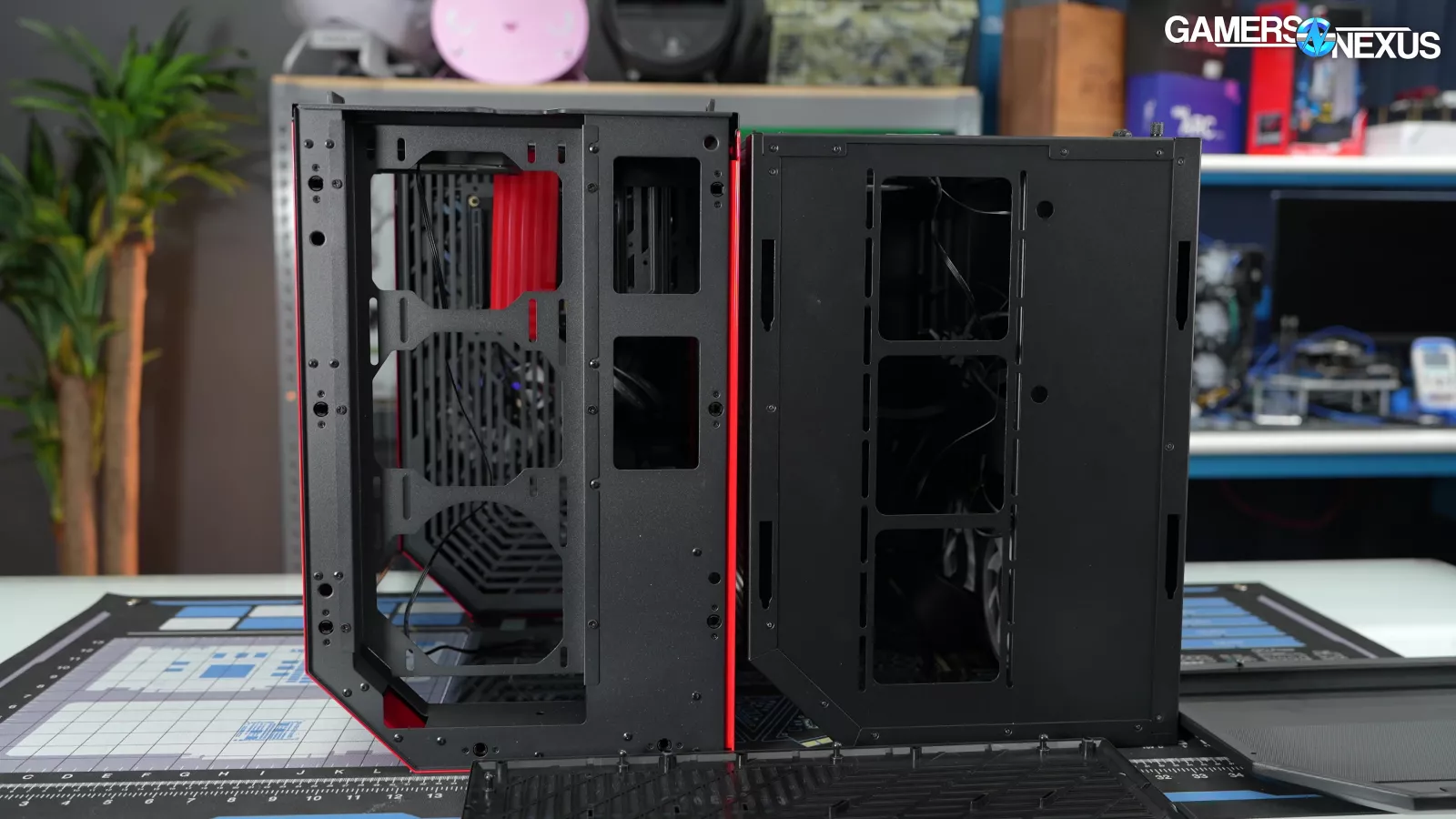
The HYPE doesn't take advantage of this extra width in any way, and it actually has reduced fan support versus the Y60, with exclusively 120mm mounts in all locations according to the spec sheet.
The spec sheet is incorrect, though, and the HYPE does actually have 140mm and 120mm slots for side intake.
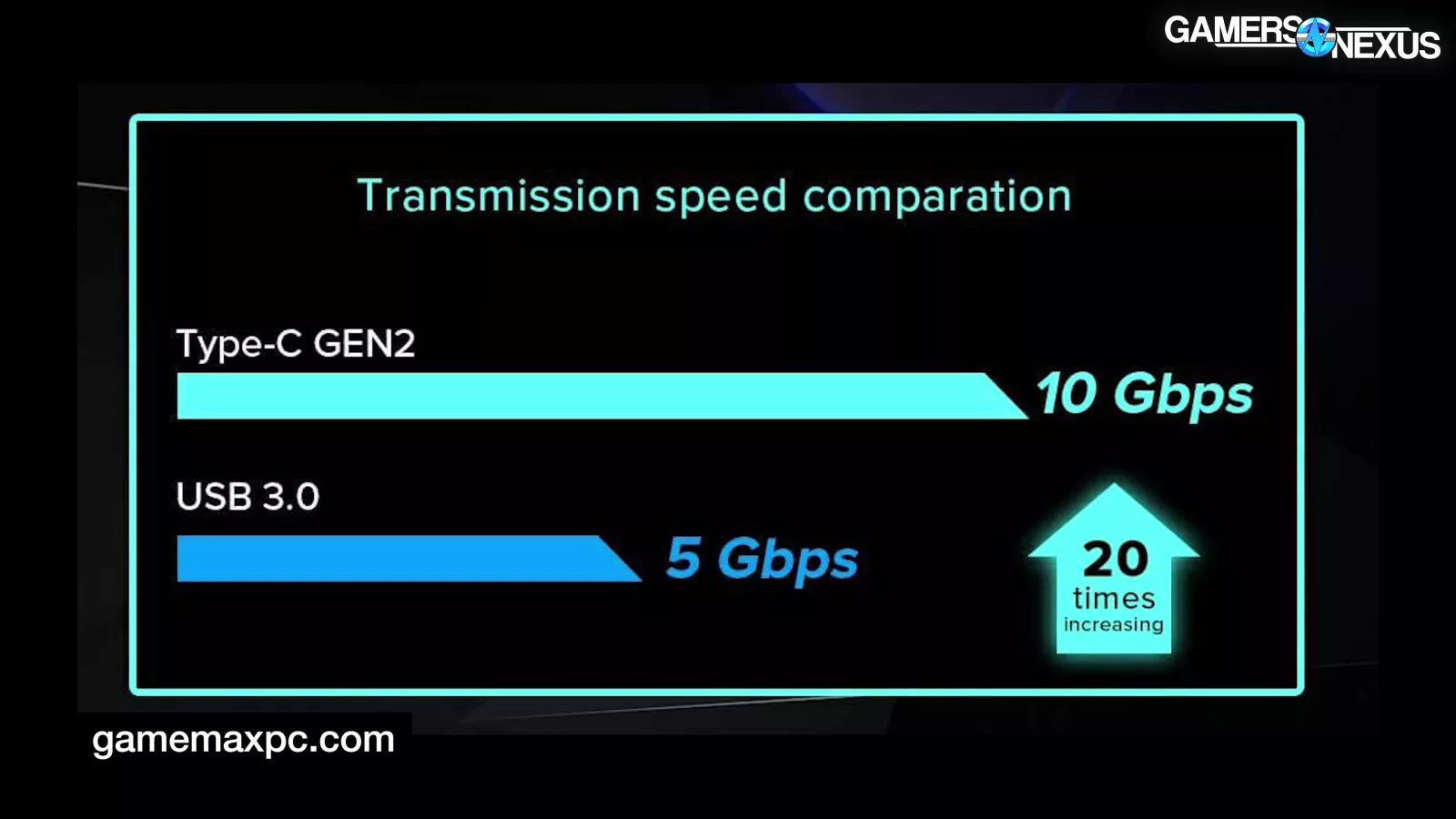
The front panel is up-to-date with a USB Type-C port that GameMAX says is capable of 10Gbps speeds, and it also notes that 10Gbps is "20 times increasing" versus 5Gbps, which isn’t how math works.
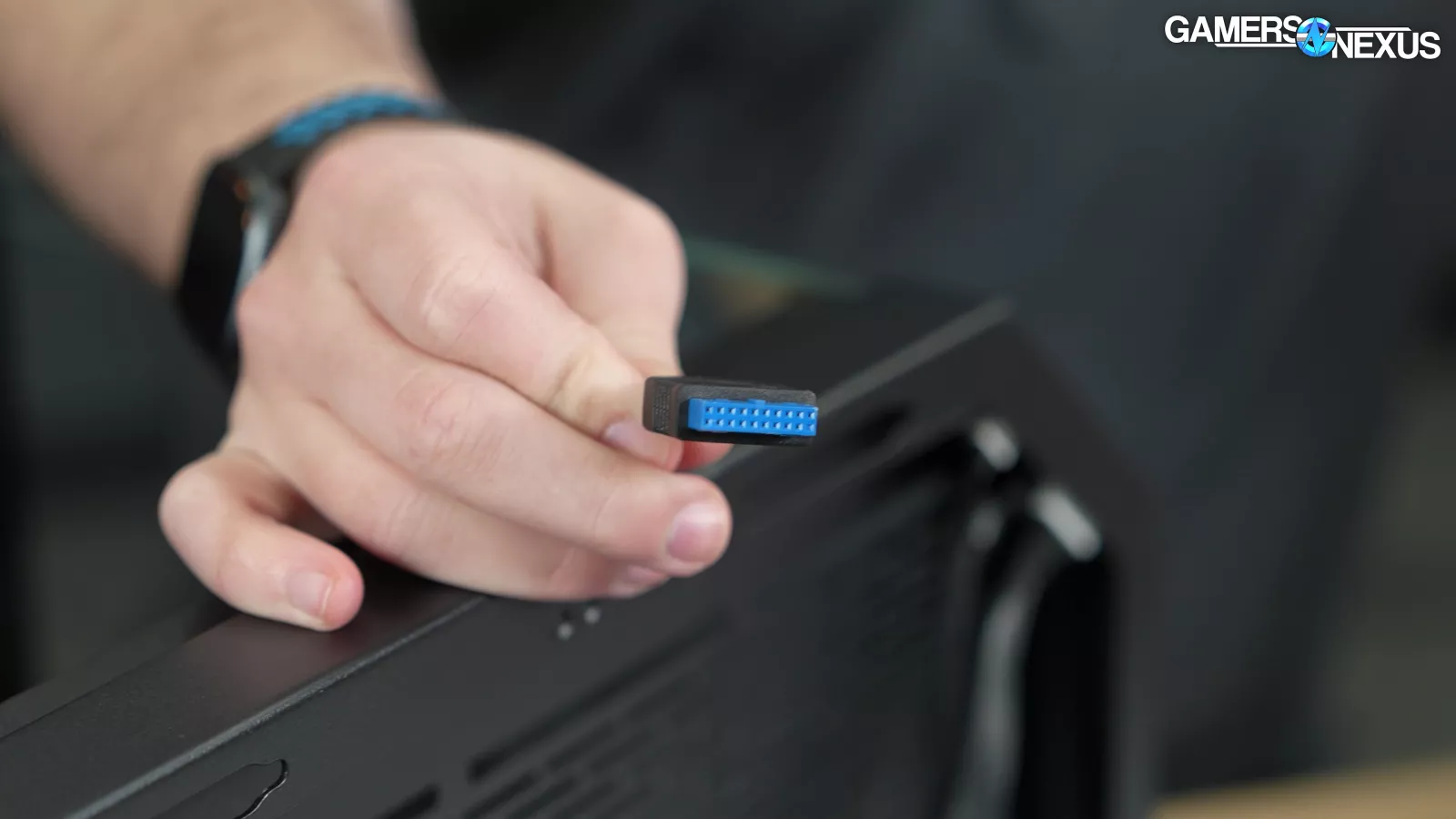
There's a single Type-A port, despite using a full USB 3.0 motherboard header on the other end.
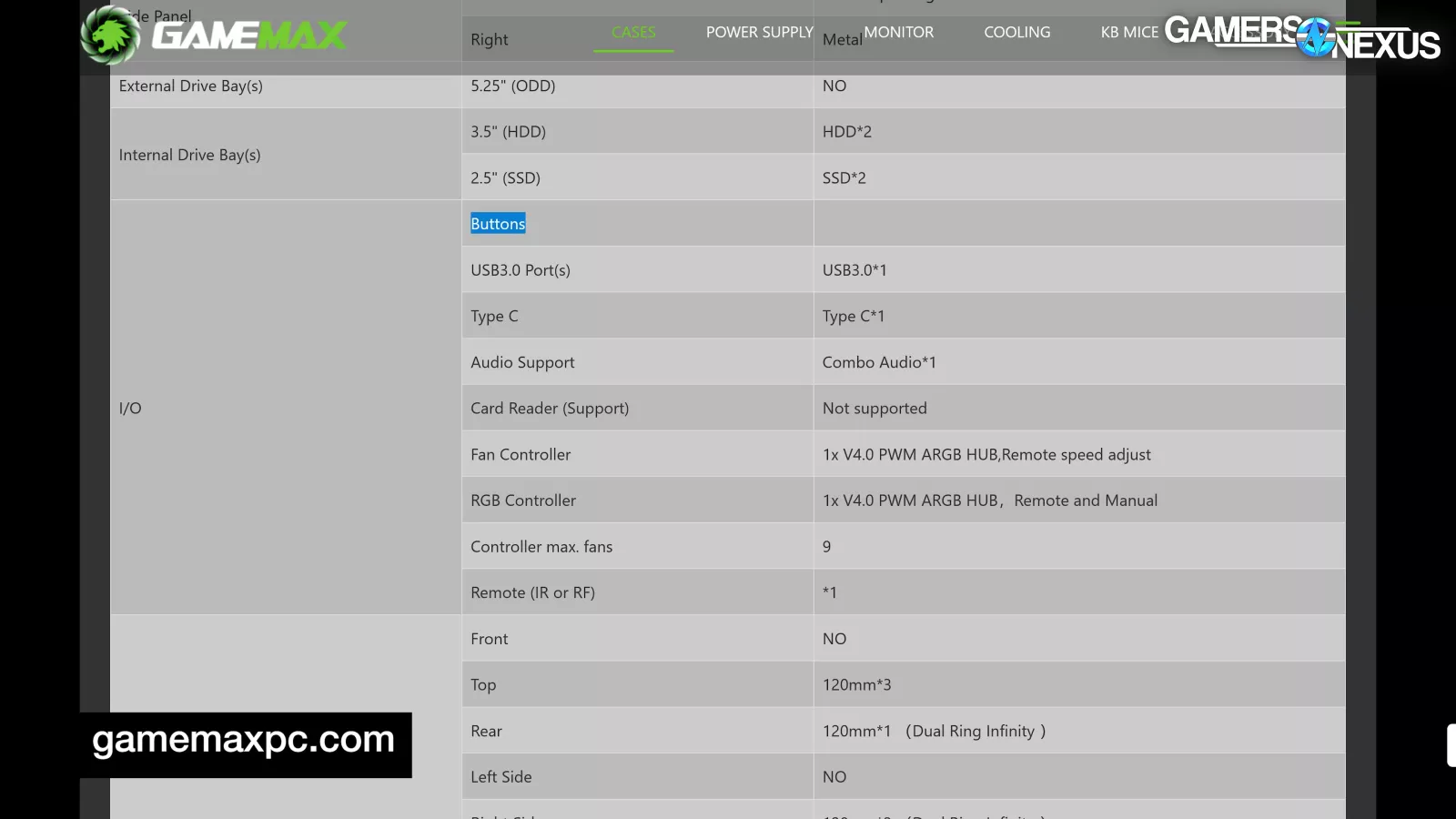
As the spec table notes, the front I/O also features "buttons," with the reset switch wired to the RGB controller out-of-the-box.
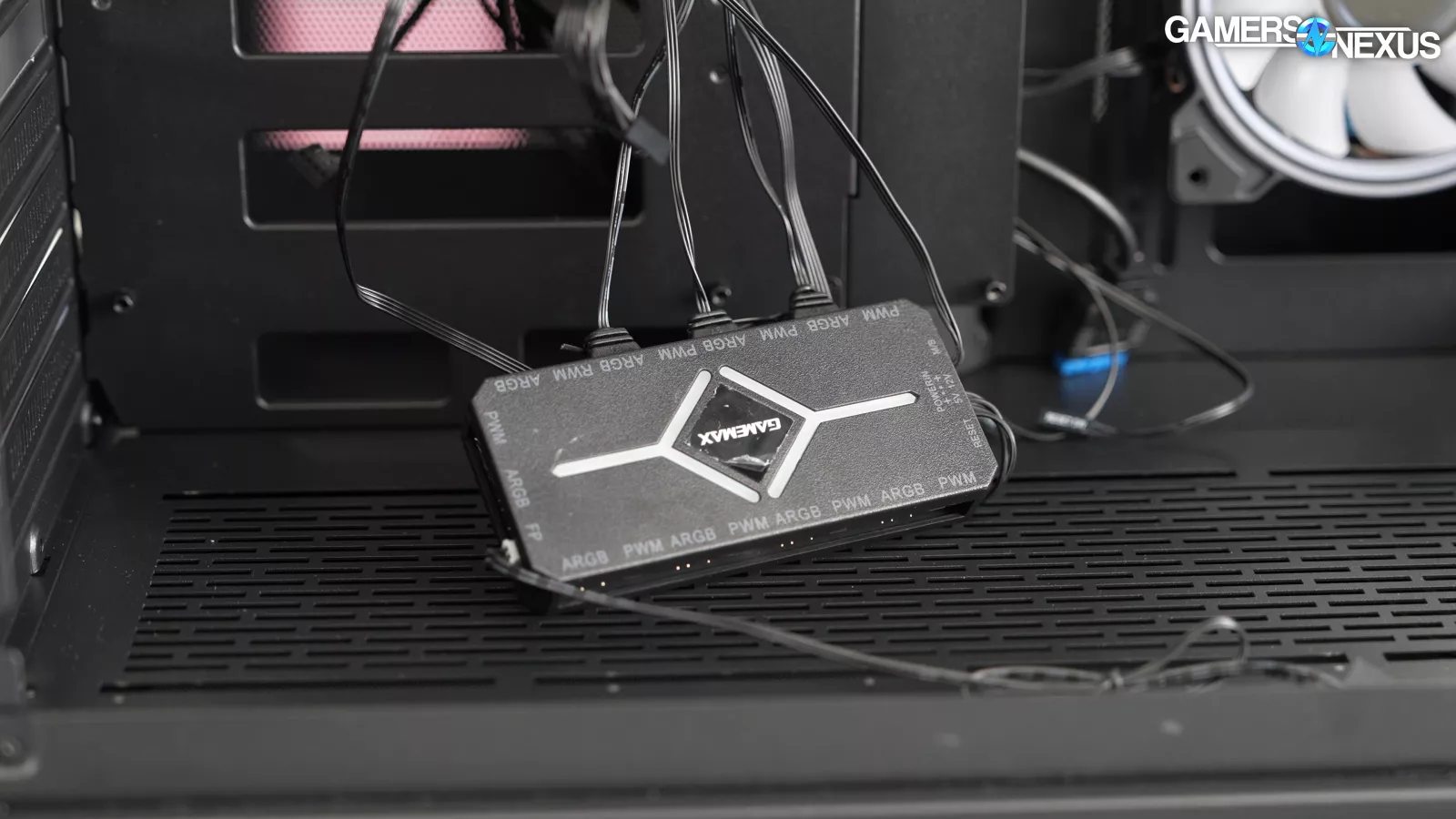
The lighting can also be controlled with a remote or a motherboard header, but it frequently fails to respond to the remote for mysterious reasons.

Hype Thermals
For our thermal testing, we'll be focusing on comparisons to the Y60 for obvious reasons. If the HYPE has a chance anywhere, it's here: being a ripoff doesn't mean it has to have bad thermal performance, and the real HYTE Y60 is weak in this area.
As we mentioned earlier, the default layout of the GameMAX HYPE has one rear exhaust fan and two side exhaust fans. We did some tests with the two side fans moved to bottom intake in imitation of the Y60, but we weren't able to completely copy the Y60's layout since the vertical GPU mount in the HYPE is incompatible with our hardware (and we had to supply our own riser cable).
All temperatures are expressed as degrees above room ambient, which is logged during all testing.
Hype CPU Full Load Thermals - Noise-Normalized
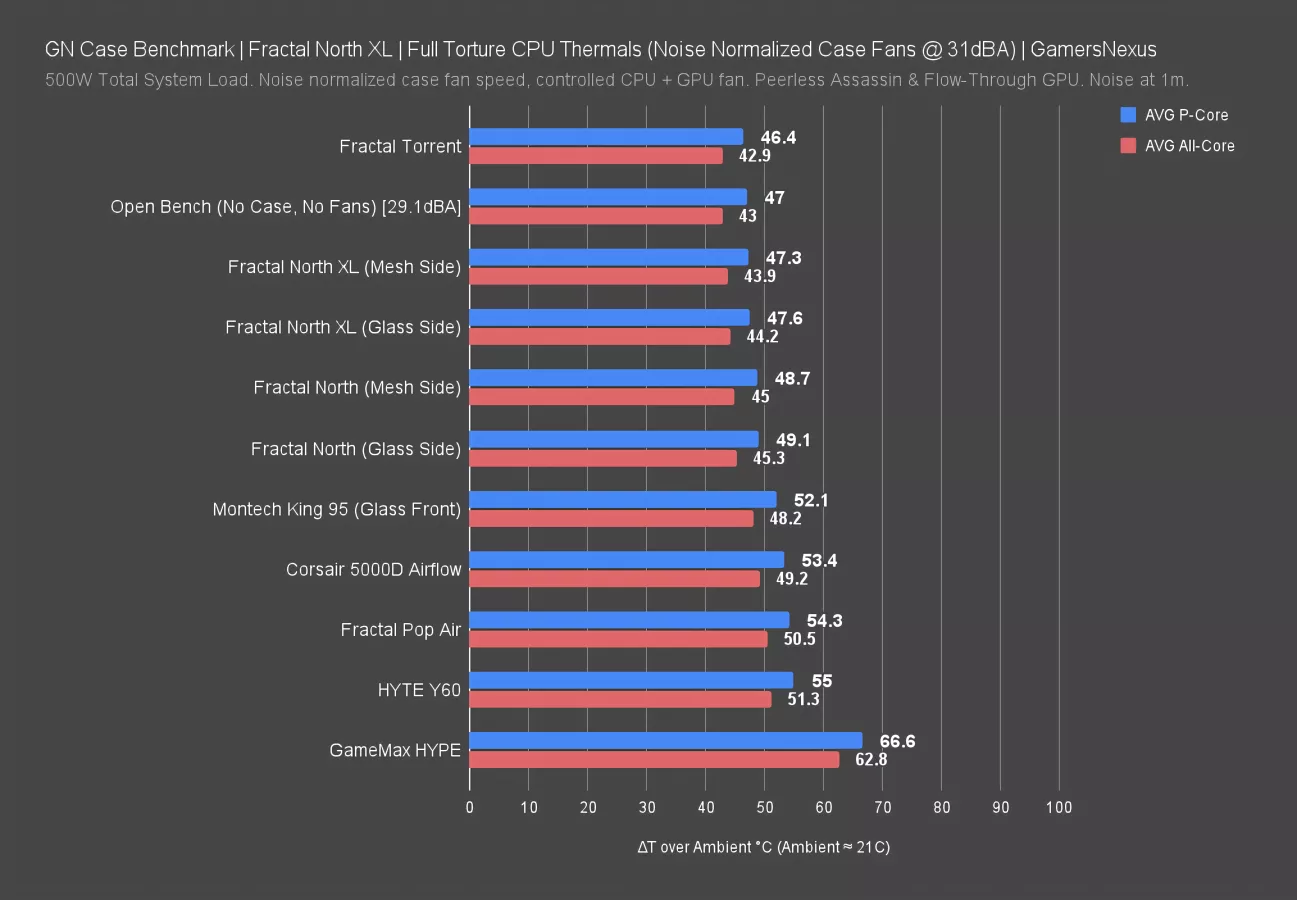
We’ll start with noise-normalized thermals, which puts all cases on the same playing field by reducing their included fan RPM until the total system noise hits a 31dBA threshold in our hemi-anechoic chamber. This is done with the included case fans only.
The first result is for CPU thermals in a torture workload. The best case on this chart was the Torrent at 46.4 degrees Celsius over ambient. The Hyte Y60 shows a massive increase in thermals as compared to the best of the best on this chart, allowing almost a 10-degree climb from the Torrent. That’s a huge swing, but we already knew the Y60 only ever achieved acceptable performance previously and was rarely among the best.
The Hype, however, is actually terrible. It is officially the worst case we’ve tested with our 2024 methodology we debuted a couple weeks ago, so... congratulations? This case is the reason why we had to so carefully tune the testing, because any hotter and it’d be in throttling territory that limits how much visibility we have into its suckitude.
At 66.6 degrees over ambient, its result is appropriately numerically representative of the temperature inside the case: Which is hell for the CPU, at about 89 degrees when including ambient. Even for a copycat, this area of performance has no excuse for being so bad.
Hype GPU Full Load Thermals - Noise-Normalized
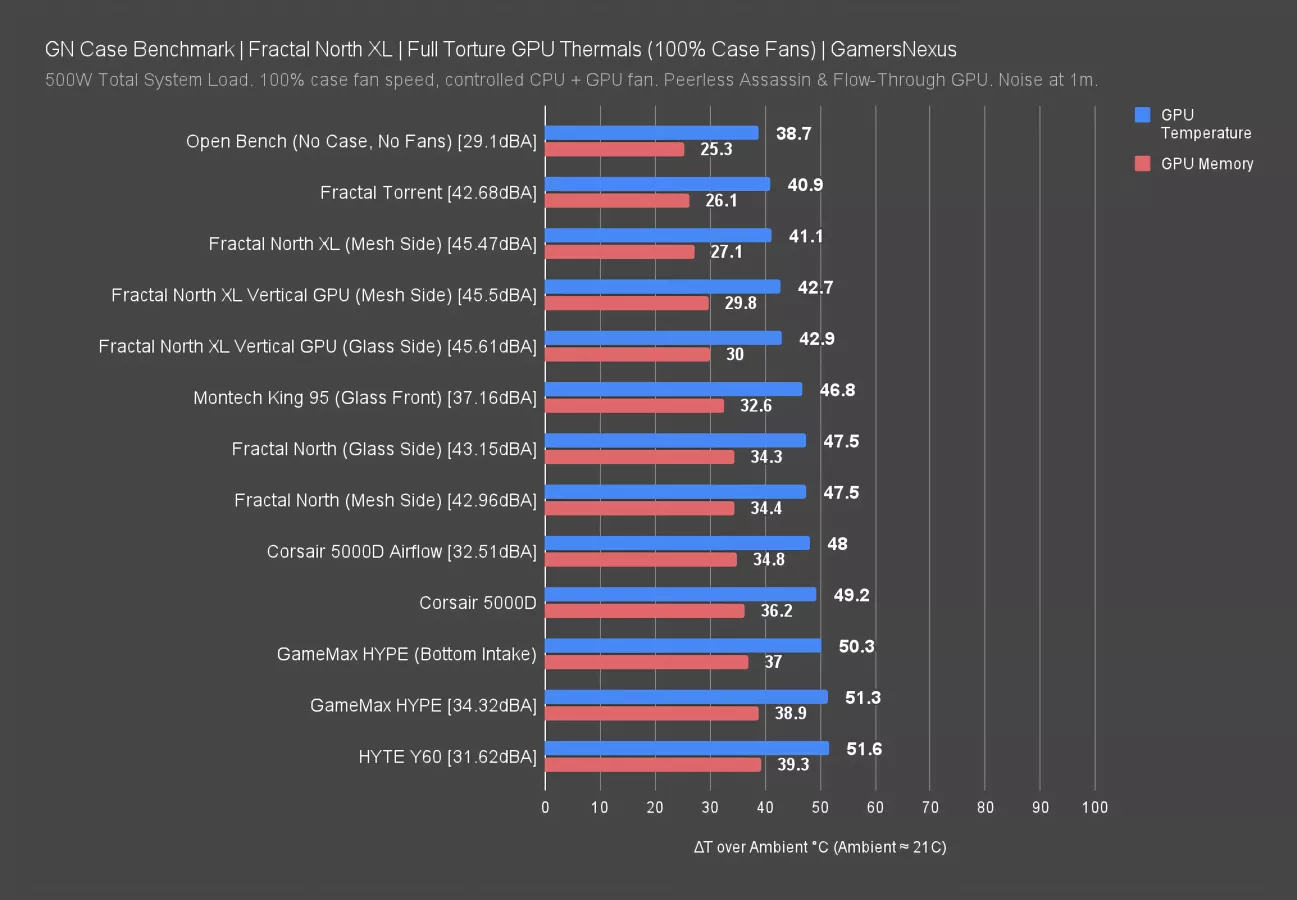
The GPU thermals in the same test had the Hype down at 54 degrees over ambient. The range for these results is generally fairly tight between average cases, with most in the 45-48 degree range and the best in the low 40s. The open air testing shows just how restrictive modern PSU shrouds and panels can be to GPU intake. But the Hype result is at the bottom. Hyte’s Y60 is predictably limited here as a result of its vertical mount, something we talked about in our review of the case, but is still at least acceptable for seating the card back as far as possible. But the Hype case just completely drops the ball, especially considering this is one of the key areas it changes from the Y60.
Hype VRM & RAM Full Load Thermals - Noise-Normalized
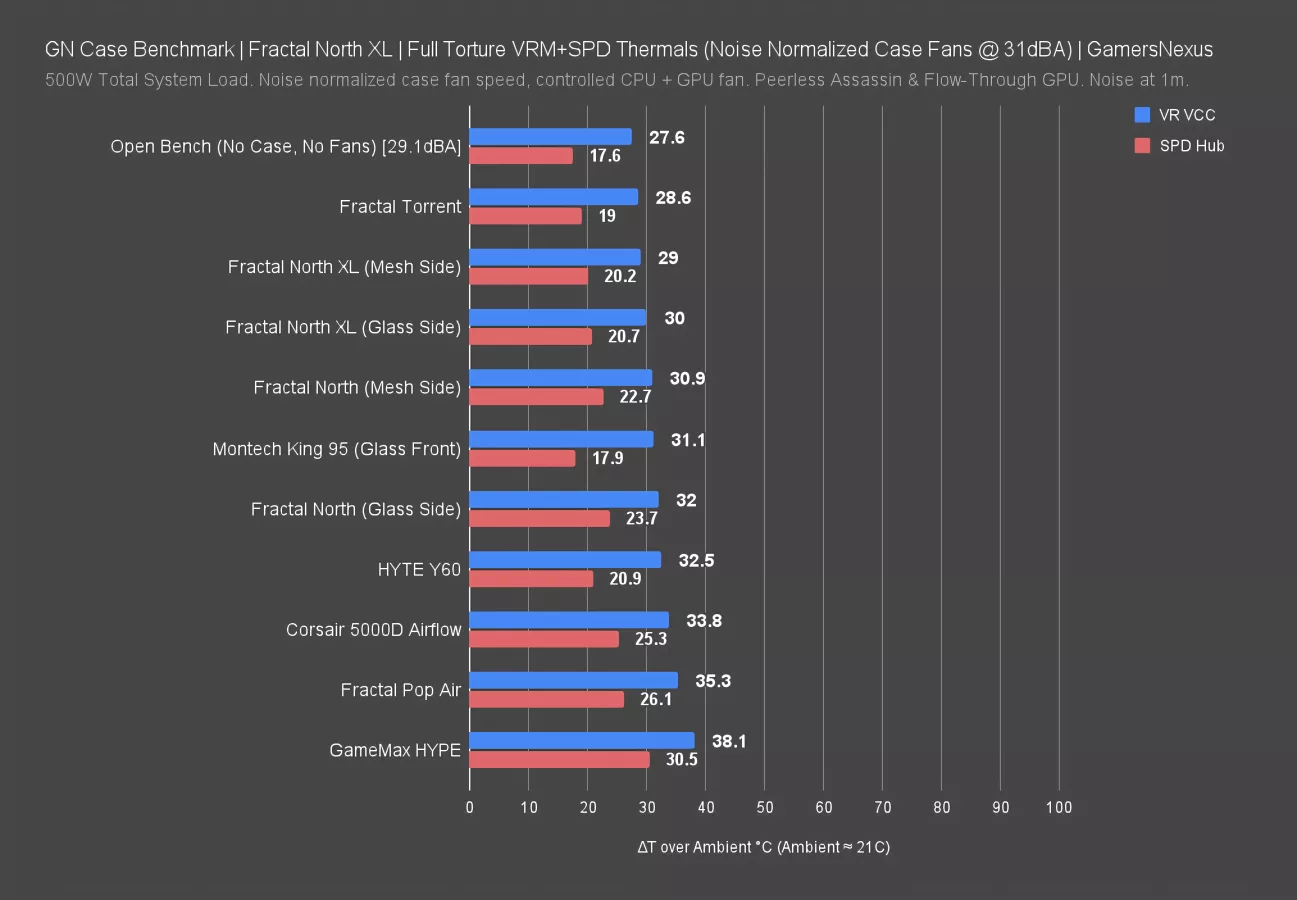
This chart is one of our new ones that we’ve been excited about with our case reviews rework: It includes VRM thermals, so that helps show if the top area of the case becomes a hotspot, and it also shows DDR5 RAM thermals with the SPD Hub.
The Hype continues to impress: It manages, once again, to be the absolute worst performer on the chart despite copying a case that was at least near the average in this test. The MOSFET we measured ran at 38 degrees over ambient. In an absolute sense, it’s fine -- that’s not bad for the MOSFET. But in the relative sense, that makes this case 10 degrees worse than the best on the chart and nearly 6 degrees worse than its “inspiration,” the Y60.
Memory temperatures are also massively increased here, with a ginormous jump from the previous worst on the chart (the Pop Air) to 31 degrees over ambient. That’s about 10 degrees hotter than the Y60. That means if you're running particularly hot memory or you were trying to overclock while buying a ripoff case for some reason then you actually might limit the head room for the memory.
Hype GPU Full Load Thermals (Full Speed)
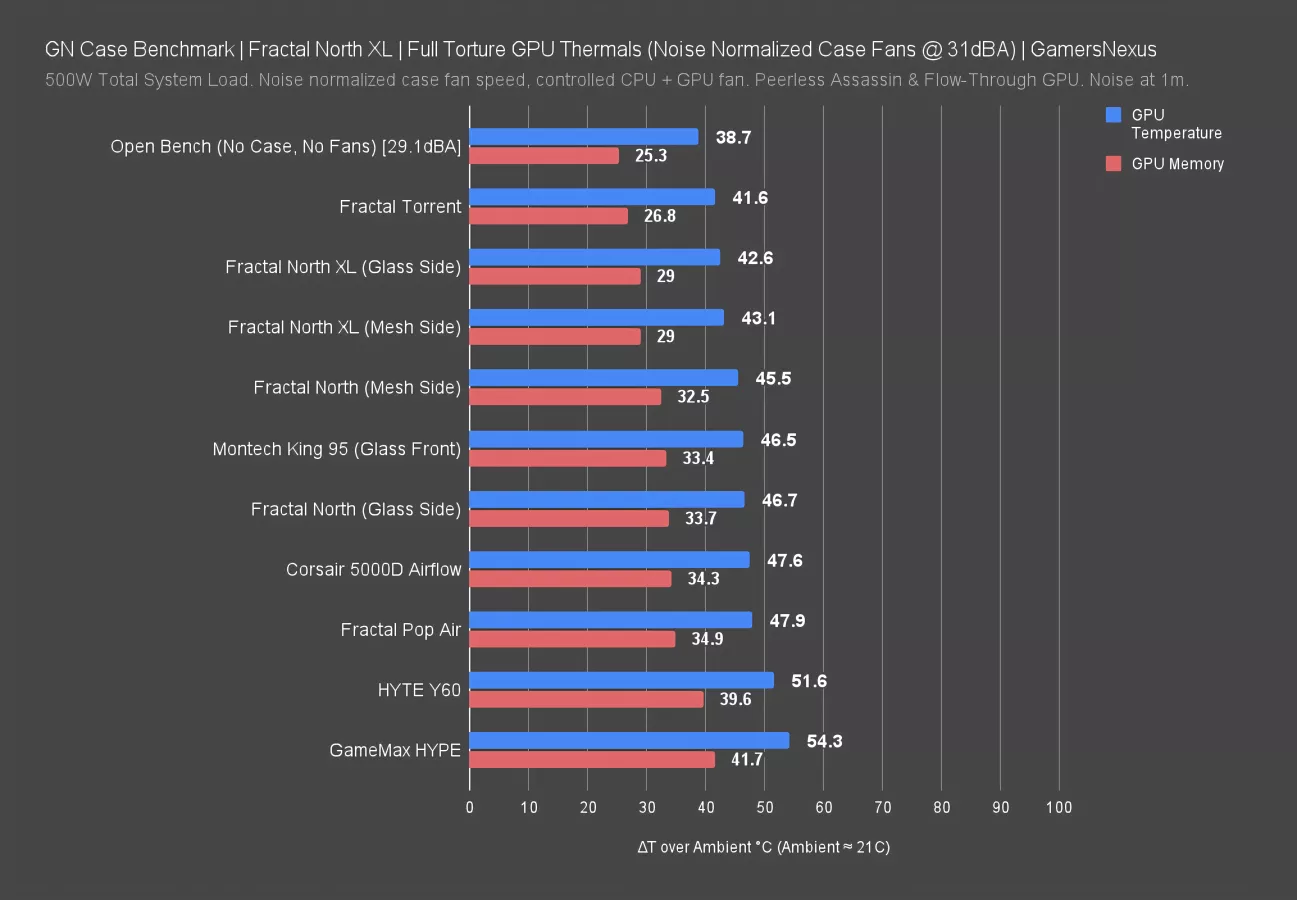
Now we’ll increase the case fan speeds to 100% on all tested cases, leaving the GPU and CPU fans controlled. Looking at GPU thermals, the Hype case -- despite having absolutely terrible CPU thermals in this test -- managed to at least tie with the Hyte Y60 for GPU thermals. Moving to bottom intake instead resulted in a better outcome for the GPU, which makes sense since it gets intake closer to the card.
But even still, as the Hype fails to even understand the mechanical attention to detail of the Hyte case and also fails to deliver better performance, but still costs $110-$160 before shipping (and shipping was as high as $200 from AliExpress), there are simply no reasons to buy it, but it was a great workout for our new case testing methodology!
As a final note here, we found that moving the fans to intake in the bottom caused an audible sound of rushing and wind in the Hype case. This was a result of all the layers of steel and mesh.
Hype Conclusion
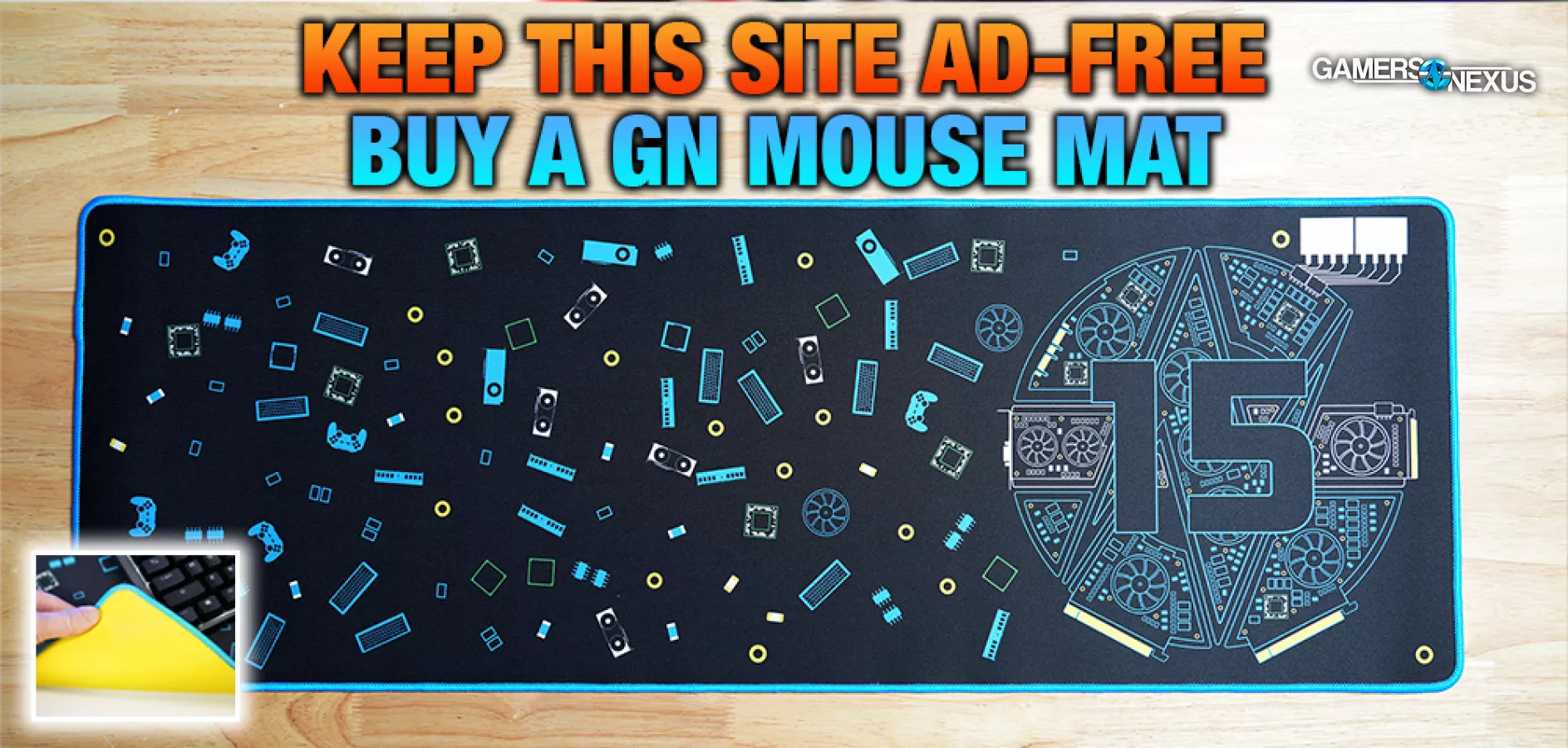
We knew going into this review that it would be an extended piss-take. It's not our job to defend the honor and intellectual property of case manufacturers, and it's not yours either, but even in a vacuum, the HYPE is crappy enough that we wouldn't recommend it at $150 or $110.
But with regard to the literal copy/pasting of the marketing text, in the US at least, that is definitely theft of intellectual property. But they don’t operate in the US, and it’s extremely unlikely Hyte would ever pursue a company internationally (especially when that lawsuit is unlikely to yield anything that matters).
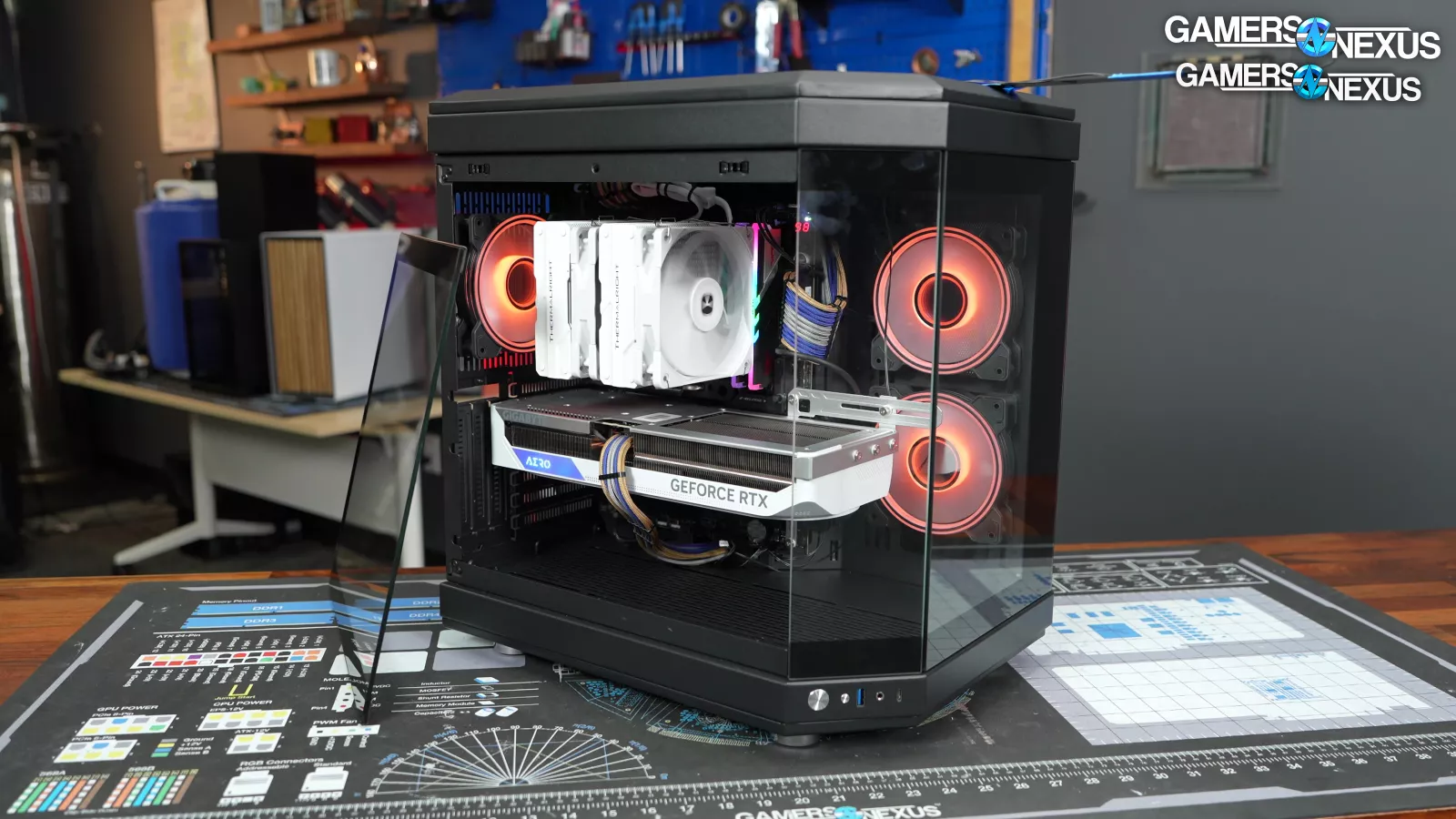
The lesson here is that GameMAX's time and money would have been better spent on designing and tooling up for an original design with an original name, rather than trading on the name of some other company's product. We really mean it when we say it's a shame because now we don't want to review GameMAX products after this, because even if GameMAX does come up with an amazing design, we're never going to want to risk implying that a stolen idea is a good first-party design. The line in this industry is very wide and very gray, but GameMAX marched all the way across it willingly.
